![]()
The Standish Family of Ireland.
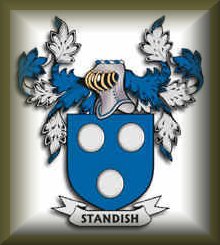
Christopher Standish of Duxbury Lancashire 1532 A.D.
to -:
Standish Mason of Dublin Ireland 2008 A.D. ![]()
to -:
The Standish Family of Canada. 
![]()
1. The Standish Family of Ireland.
2. The Standish Family of Rathbeggan House, County Meath, Ireland.
3.date 1519. The TWO James Standishes
4. Marriage of James Standish and Elizabeth Butler.
5.Looking for the father of James Standish .
6.John Standish father of James Standish.
7.The Will of Thomas Standish Lord of the Manor of Duxbury.
8.1556 - Christopher Standish and the Mill at Duxbury.
9.The Evidence for Two Christopher Standishes living in Duxbury 1563 – 1599.
10. 1584 - John Standish and the parish register of the Church of St. Laurence.
11.The Family of Christopher Standish born Duxbury England 1532.
12. Lord of the Manor of Duxbury 2008.
13. THE STANDISHES OF CANADA .
14.The History of the Mason Family Business Dublin Ireland.
15.1649 The Battle of RATHMINES Dublin Ireland.

This letter dated 30 th May 1658 is one of several letters to Oliver and Henry Cromwell from James Standish Vice Treasurer of Ireland that are sealed with the common seal of the Standish Family of Duxbury. - Webmaster.
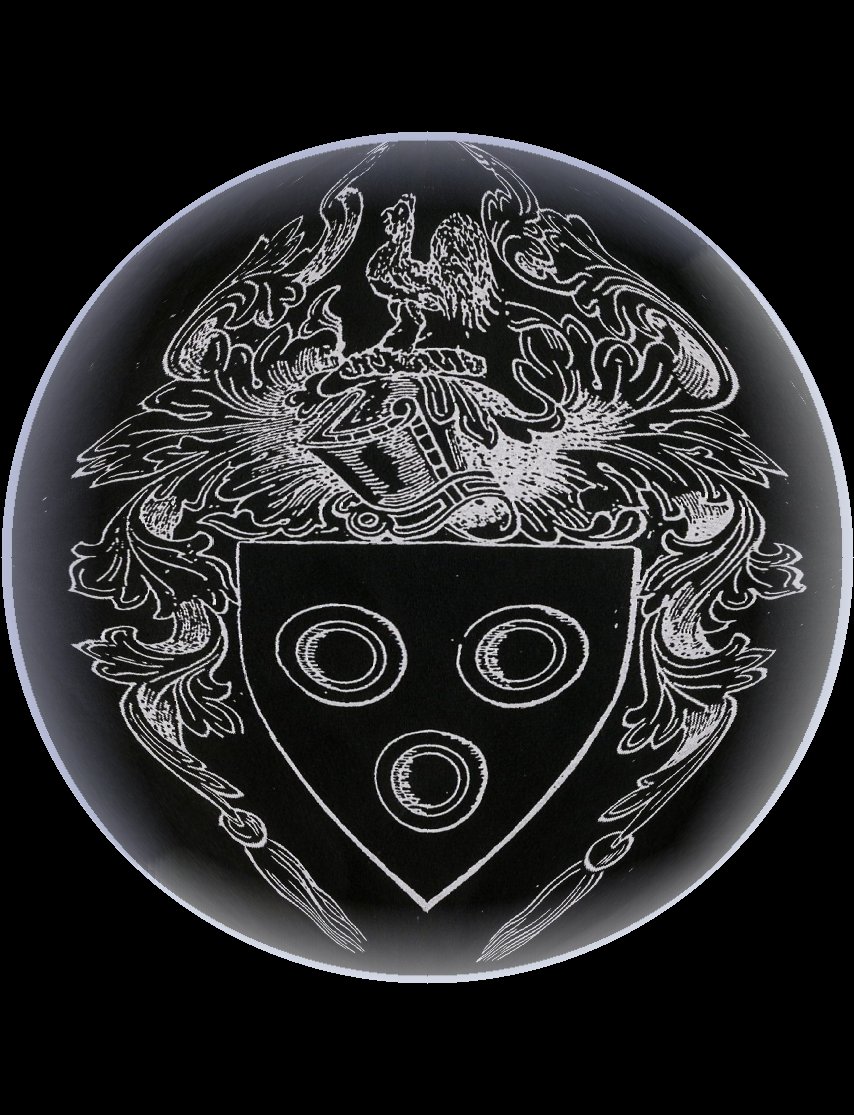

of
Rathbeggan House, County Meath, IRELAND.
The following notes are from the article on James Standish, Vice-Treasurer of Ireland,
by Reverend William Ball Wright
(Jour. R.S.A. I, Vol, I, 5th Ser.).
Vice Treasurer of Ireland - James Standish a descendant of the Standish Family of Duxbury.
An article on James Standish, the Vice-Treasurer of Ireland during the Cromwellian period, was published in 1890. The author was Reverend William Ball Wright, M.A. The article suggests that the Vice-Treasurer and his brother Joseph Standish of St. Mary’s Lane, Oxmantown, Dublin, were sons of one Henry Standish and grandsons of Christopher Standish of the Duxbury family.
Christopher Standish appears in the Standish Pedigree as the second son of James Standish of Duxbury by his wife Elizabeth Butler, whom he married in 1526.
The baptismal register of Chorley Parish Church records the baptisms of several children of Christopher Standish, commencing with his son James, baptized on 21 January 1558. None of those recorded is named Henry. The Chorley registers record the burial of Elizabeth, wife of James Standish on 9 November 1565 and of James Standish, Esquire, on 1 May 1566.
In his article, Reverend Mr. Wright quotes a petition of James Standish, Vice-Treasurer, to Oliver Cromwell dated 6 April 1655 which appears to mean that James Standish was already living in Ireland in 1641 when the rebellion broke out against King Charles I. He was appointed Receiver General and Vice-Treasurer of Ireland by Cromwell early in 1649 and held that post until the Restoration of 1660. Wright quotes several letters written by James Standish in his official capacity and sealed with the Arms of Standish of Duxbury To have so used these Arms at that time without belonging to the Duxbury family would have been an act of incredible presumption. Although Wright was unable to prove the descent of James Standish, the use of the Arms is persuasive evidence that James was of the Duxbury line.
During the Cromwellian period, James Standish received a grant of land in County Antrim, Ireland. After the Restoration, he apparently made his peace with the government of Charles II and in the Patent Roll of 1666 he received a grant of forfeited lands in County Meath. Among these were the lands of Rathbeggan and Porterstown in the barony of Ratoath.
James Standish apparently married twice. His first wife is believed to have been Anne Carterett, a sister of Dr. Philip Carterett, Advocate General of the Cromwellian Army in Ireland. She was presumably the Anne Standish buried at St. Michan’s Church, Dublin. He seems to have had daughters by both wives but none that survived him.
The Vice-Treasurer had a house at the King’s Inns, the site of the present Four Courts in Dublin. Late in his life he moved to Hatton Garden, in the parish of St. Andrew’s, Holborn, London, where he owned another house. He died at his Holborn house in 1695 and by a short will dated 14 September 1683, he bequeathed to his wife Hannah, his lands in the Barony of Ratoath, County Meath, his stables, coach and horses in Hangeman Lane, Oxmantown (now part of Dublin), his houses in Dublin and Holborn. His widow proved the will in the Prerogative Court of Ireland in September 1695.
Hannah Standish of St. Andrew’s Parish, Holborn, widow, died in 1698 leaving a will which has survived in the Public Record Office, London. By somewhat complicated provisions, she left the property to the children of nephews of her late husband.
As a result of the burning of the Public Record Office in Dublin in 1922, Irish genealogical research is notoriously difficult. For example, an Index has survived of the Prerogative Wills of Ireland from 1536. It lists a number of Standish wills but, with few exceptions, the wills themselves (including that of Joseph Standish’s father) were lost in the fire. An index of Marriage Licence Bonds has survived, but not the Bonds themselves. The old parish registers of many Church of Ireland parishes (including those for the parishes of Bourney and Skirk where Joseph’s ancestors lived) were deposited in the Public Records Office during World War I, only to go up in smoke in “the Troubles” that followed it.
The Irish records that have survived relate to three, and apparently only three, families bearing the name Standish: Standish of Bruff and Bally-frankie, County Limerick; Standish of Rathbeggan House, County Meath; and Standish of Mill Park, County Tipperary and Ballytarsna, Queen’s County.
The Meath Family
The Standish family of Rathbeggan House, County Meath were the heirs of Vice-Treasurer James Standish. Notes based on the wills of this family appear in Irwin’s Pedigrees
Mention has already been made of the will of Hannah Standish, widow of the Vice-Treasurer. The will was dated 1693 and there were codicils dated 1694,1695 and 19 September 1697. Probate was granted on 16 April 1698. Hannah left Rathbeggan and Porterstown, County Meath to “James Standish, eldest son of James Standish, late of the city of Dublin, gent., deceased, which James Standish was nephew to my late husband James Standish Esq. deceased and to his heirs male.” In the event of James the younger having no male heirs, the Meath lands were to go to Joseph Standish, the second son of the late James and his heirs, and then to Henry, the third son. The lease of the house in King’s Inn, Oxmantown was left to Anne and Jane Standish, daughters of the late James. The house in Hatton Garden, London, was left to John Standish, second son of “John Standish of Grey Friars, London, nephew to my husband.” Other children of John of Grey Friars were also mentioned.
It appears therefore that the Vice-Treasurer had had two nephews, believed by Reverend Mr. Wright to have been sons of Joseph Standish of St. Mary’s Lane, Oxmantown. This Joseph may be the “Jos. Standish” whose burial is recorded in the Parish Register of St. Michan’s Church, Dublin, on 17 March 1661.
The nephews were James Standish of Dublin who died before Hannah made her will and John Standish of Grey Friars, London, who survived. To the family of the late James, Hannah left the Irish property. To John’s family she left the English property and there is no evidence that any of John’s descendants ever lived in Ireland. As matters turned out, James the elder son of the Vice-Treasurer’s late nephew James had male heirs who inherited the Rathbeggan property and so that property never passed to his younger brothers, Joseph and Henry, mentioned in the Vice Treasurer’s will. Reverend Mr. Wright recorded nothing further about Joseph. Henry was apparently a merchant in Dublin whose will was probated in the Prerogative Court in 1741. Wright states that their sister Anne married Benjamin Rainsford of Leixlip and that their sister Jane married William Payne at St. Brides in 1697.
The fact that Reverend William Ball Wright compiled information on both Vice-Treasurer James and on the Mill Park family is one of several elusive hints that Robert of Mill Park was related to the Rathbeggan Standishes and through them to the Vice-Treasurer and ultimately to the Duxbury branch of the ancient Lancashire family. The other “hints” are as follows:
1. There is a strong family tradition among the descendants of Joseph Standish of Esquesing, that Joseph was educated at the Diocesan School at Trim, County Meath. The story, which will be referred to again in Chapter VI in connection with the Wellesley family, was repeated very often by Joseph’s son-in-law, Dr. Robert McCullough of Georgetown, Ontario and his son, Dr. Allan McCullough. There was such a school at Trim in the late 18th century, when Joseph would have attended. It no longer exists and no records of it have been located from which to verify the tradition. Trim is a very long way from Roscrea and Borris-in-Ossory but it is only about 12 or 15 miles from Rathbeggan House. For Joseph’s father to have sent him to school at Trim seems totally inexplicable unless there were relatives living near Trim who, perhaps, took an interest in the boy.
2. The Mrs. Standish of Rathbeggan, whom Joseph would have known, had the unusual name of Lydia. Joseph Standish gave that name to one of his daughters. He named his eldest daughter for his mother-in-law and his second for his mother. His third daughter, born in 1810 was
named Lydia. That name does not appear to have belonged to anyone in the immediate family of himself or of his wife. He does not seem to have been one pick names out of the air. His fourth daughter was given the name of his aunt Mrs. Percy, his fifth the name of his sister-in-law Mrs. Matthew Standish, and his sixth the full maiden name of his wife Mary Sawyer. Why Lydia, unless it was for Mrs. John Standish (nee Lydia Mason) of Rathbeggan House, County Meath?
The Standish Family of Rathbeggan House, County Meath, Ireland.
Children of James Standish of Dublin, son of Joseph Standish of St.Mary’s Lane, Oxmantown, brother of the Vice-Treasurer:
1. James Standish of Dublin; died intestate 6 April 1732; m Rebecca Deacon, and had issue - (a).
2. Joseph Standish.
3. Henry Standish; Freeman of Dublin 1708; will probated 1741.
4. Anne Standish; m Benjamin Rainsford of Leixlip.
5. Jane Standish; m St. Bride’s Church, Dublin 1697, William Payne, and had issue.
(a) Children of James Standish, the younger, of Dublin and Rebecca Deacon, his wife:
1. Joseph Standish; baptized at St. Andrew’s, Dublin, 17 March 1699; died in infancy.
2. John Standish; born before 1700, B.A. (Trinity College, Dublin) 1724, M.A. 1727, ordained in the Church of Ireland, Curate of Maralin, County Down 1730-1766, Rector of Banbridge 1766-1776, d unm, will probated 1776.
3. James Standish; died before Reverend John.
4.Deacon Standish; born cl700, goldsmith, Aungier Street, Dublin, will probated 1791, buried in St. Kevin’s Churchyard, Dublin. By his first wife he had a son John, baptized St. Andrew’s, Dublin 19 April 1750, died in infancy. Deacon m(2nd) Sarah Ryan of Leighlin Bridge. Her will was probated1801.
5. Henry Standish; b cl701, seal cutter in Cole Alley, Dublin, Churchwarden of St. Werburgh’s, Dublin 1731 and 1739, inherited Rathbeggan, died intestate cl793. He married cl729 Susanna and had issue (see below - b).
6. William Standish; born 1714, baptized St. Mary’s Dublin, buried April 1715.
7. Rebecca Standish.
8. Alice Standish; married Richard Wolfe of Baronsrath and died 1754, buried in Naas Church.
(b) Children of Henry Standish of Rathbeggan and of Susanna, his wife:
1. Anne Standish; baptized St. Mary’s 29 September 1730.
2. James Standish; baptized St. Werburgh’s 20 June 1733, seal cutter in Dublin, d unm and intestate 1807.
3. John Standish; baptized St. Bride’s, Dublin, 4 March 1736, jeweller of Fade Street, Dublin, died intestate, buried St. Bride’s 23 April 1797. Married Lydia Mason and had issue who lived at Rathbeggan. (From John and Lydia the Standish family connection descends to Standish Mason and Margaret Lewis (nee Mason) of Dublin - 2008 and the Standish family of Canada as researched by the late J Richard Houston of Canada.)
Eventually Rathbeggan House was inherited by the Wilkinson family, descendants of John and Lydia.
4. Henry Standish; of North Frederick Street, Dublin; will probated 1813; married Frances Diana Obree and had issue. - Copy of will below.
Christian Standish; married John Ball of Dorset St., Dublin, and has issue (including, probably, Reverend William Ball Wright).
The Will of Henry Standish; of North Frederick Street, Dublin;
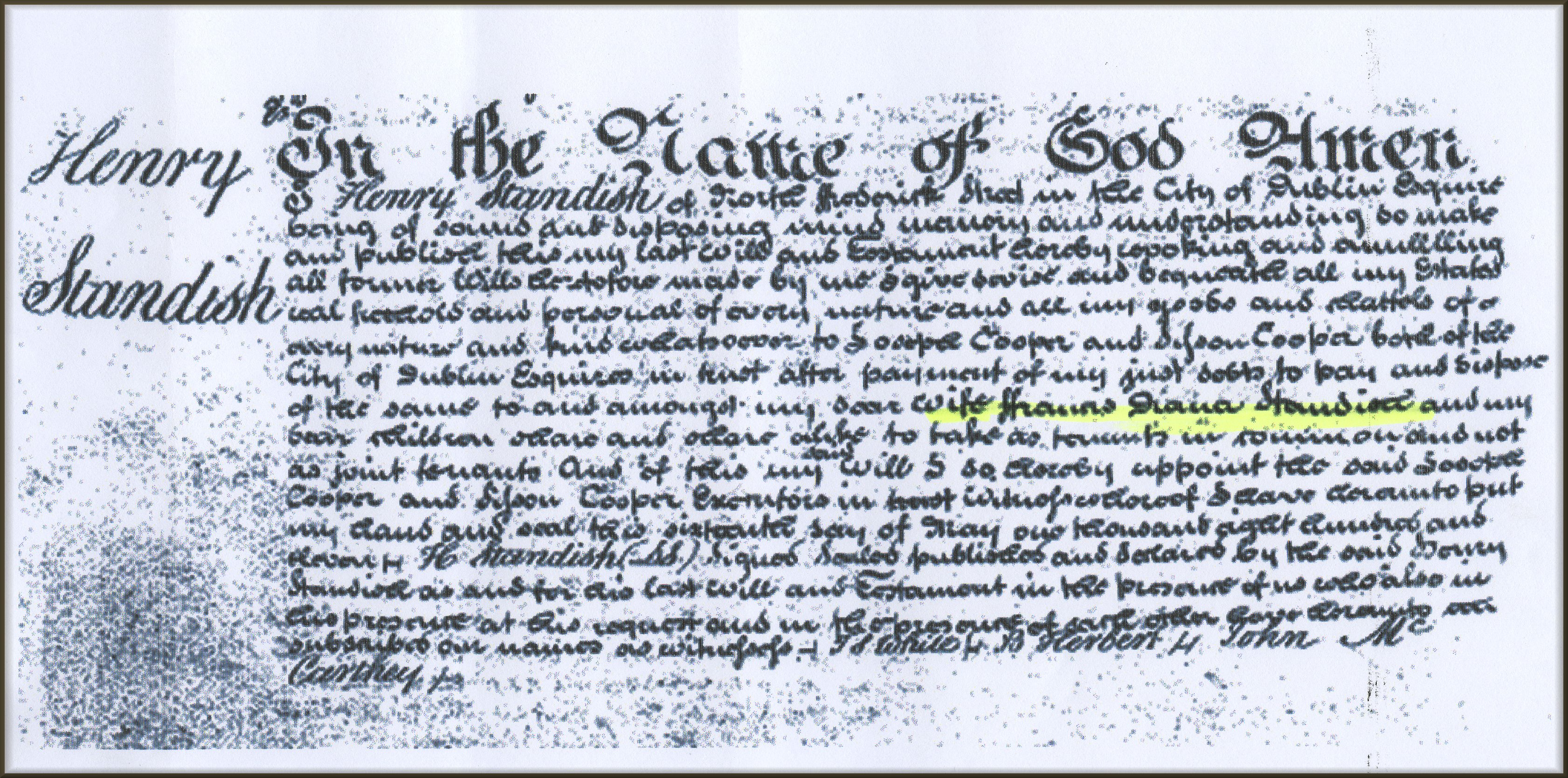

James Standish Lord of the Manor of Duxbury 1517 - 1566
Elizabeth Butler (wife of James) daughter of John Butler of Rawcliffe.
- their second son Christopher Standish born 1532.

The seal of James Standish and his wife Elizabeth in the year 1532..
date 1519. The TWO James Standishes Uncle and Nephew both have a son named "Christopher Standish"..
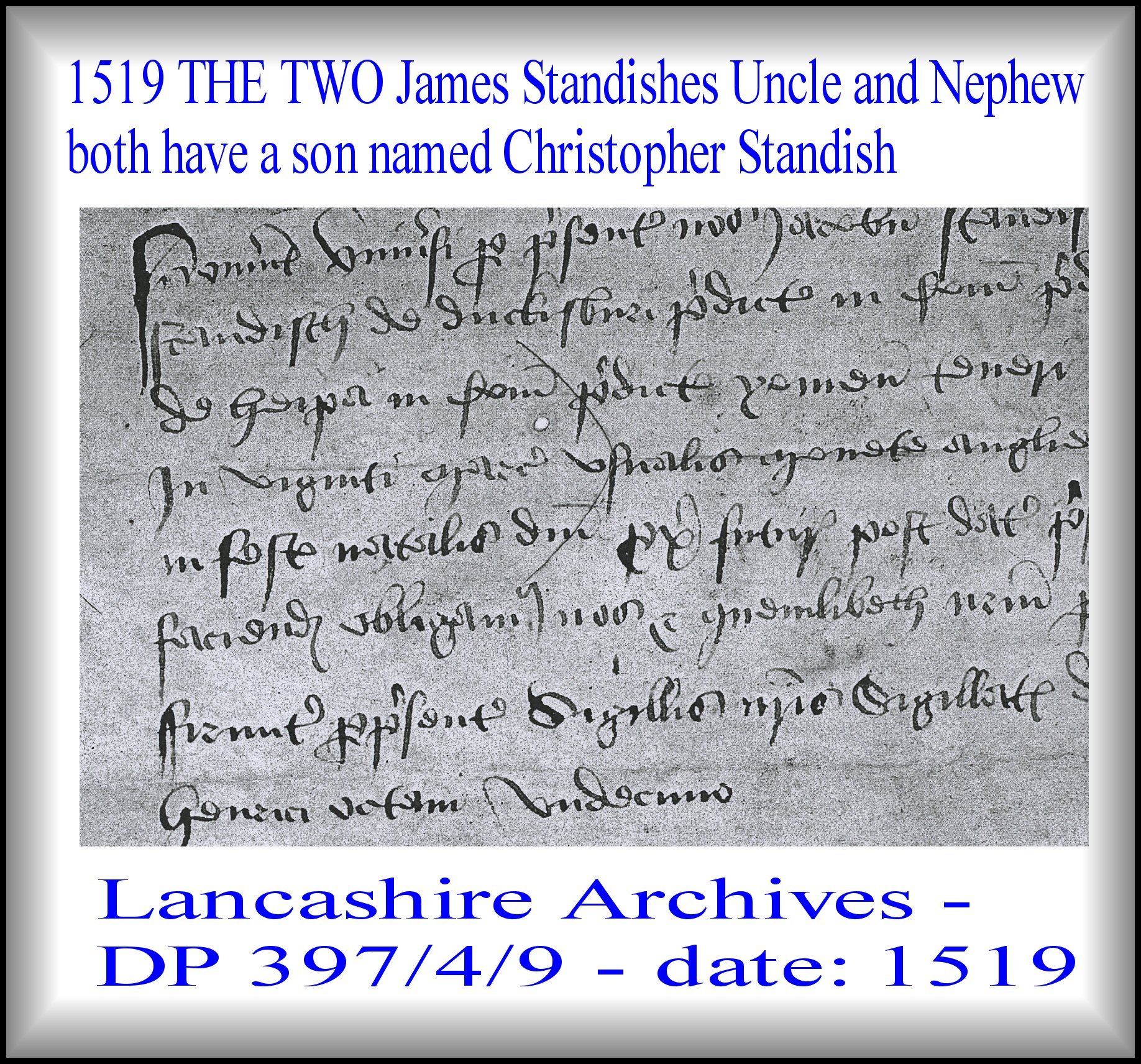
Lancashire Archives - DP 397/4/9 - date: 1519
In 20 marks: James Standish of Duckisburi esq, James Standisch of the same place gent. Richard Merton and Robert Haidocke of Heipa, yeomen to Oliver Haidocke of Heipa - and his assigns peaseabully to occupy and care at their pleasure all the 'tend cornys’ tithecorn in the town and fields of Heipa for life without any trouble from James Standisch esq. and James Standisch gent. which ‘cornys' they hold for a term of years of the Abbey of Evysham, County Worcs., and of Richard, Prior of Penwortham, provided that if this bond is not lawful, James Standisch esq, and James Standisch gent shall obtain a lease from the Prior to Oliver Haidocke
THE TWO JAMES STANDISHES of Duxbury in the year 1519.
1. JAMES STANDISH ESQUIRE. – (Nephew)
2. JAMES STANDISH GENT. – (UNCLE).

Elizabeth Butler was a descendent of Sir Richard le Botiller and Theobald Walter who was the original ancestor of the Butler family of England and Ireland. Thus when the parliamentary forces and government (including James Standish the Vice Treasurer of Ireland) were under attack in Dublin in 1649 by the royalist forces it was a distant cousin of Elizabeth Butler and James Standish the Vice Treasurer of Ireland (the Marquis of Ormond - James Butler) who was commander of the attacking royalist force.
Elizabeth Butler also brought the bloodline of the Washington family of Washington (the family of President George Washington of the USA) into the Standish family of Duxbury – Ireland – Canada.
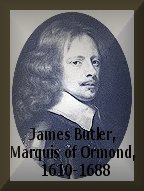
The Marquis of Ormond - James Butler cousin of Elizabeth Butler.
-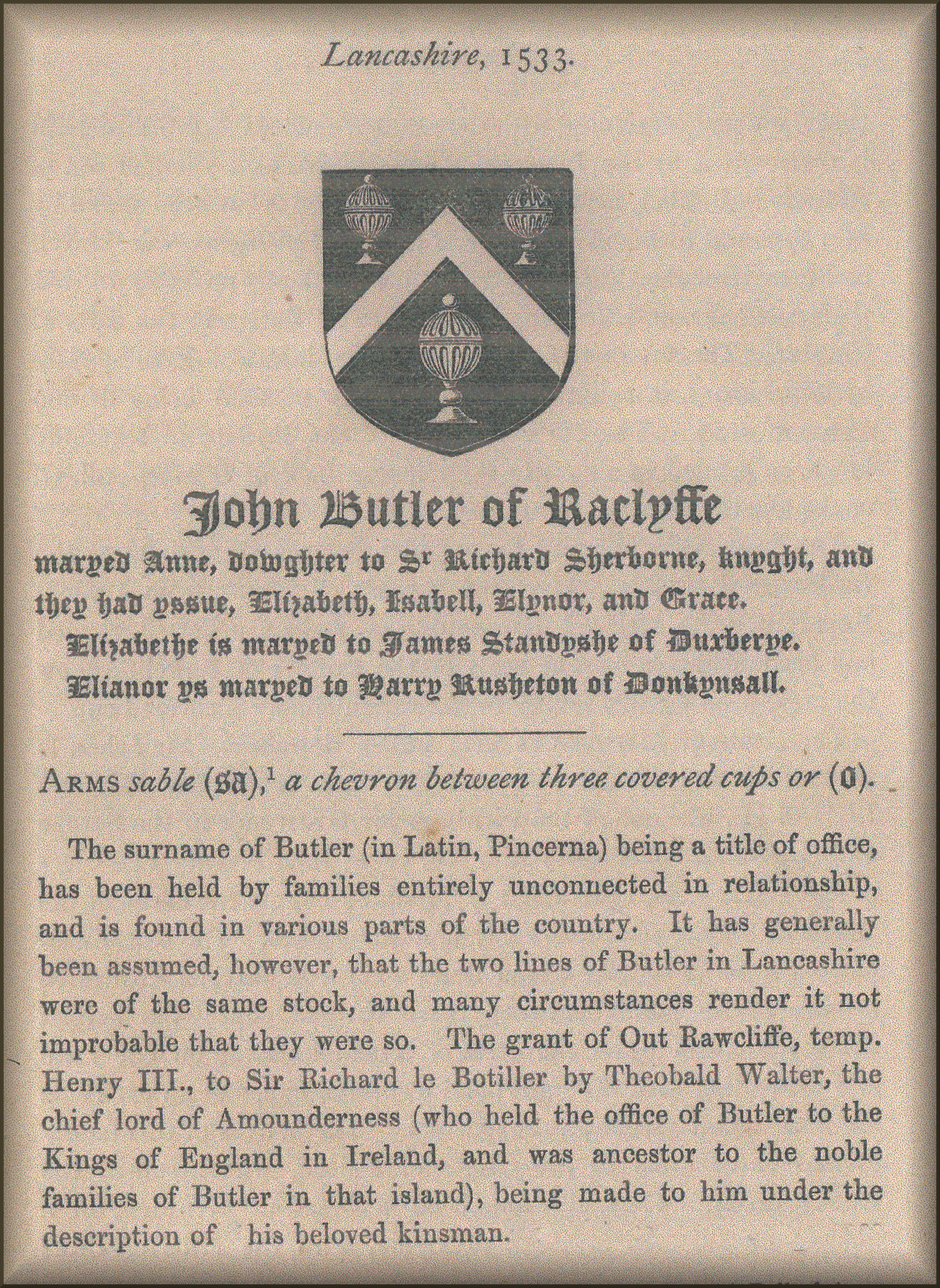
Record from the Visitation of Lancashire in the 1533 John Butler of Racliffe.
Marriage Contract for Laurence (first son) then Thomas (second son) the sons of James and Elizabeth Standish date 1531.
De Houghton papers. Deed Number 1391.
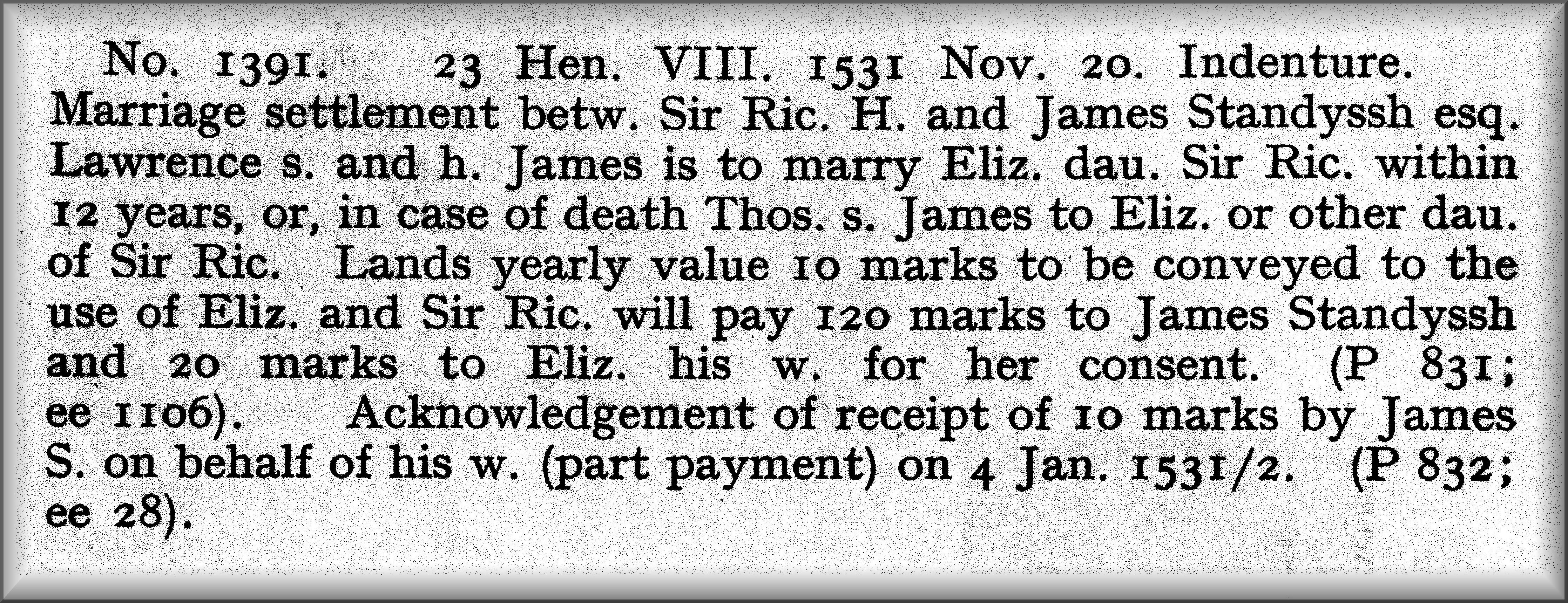
Laurence the first son of James and Elizabeth Standish died in 1532 the same year that his brother Christopher was born, Thomas the second son became heir of James and Elizabeth Standish and married Margaret de Houghton another daughter of Sir Richard de Houghton as required by the terms of deed number 1391. Thomas Standish became Lord of the Manor of Duxbury in 1566.
Looking for the father of James Standish -
the first Republican Vice Treasurer of Ireland 1649 –1661
The Reverend William Ball-Wright M.A. concluded that “James Standish the Vice Treasurer of Ireland 1649 –1661 was the grandson of Christopher Standish and Great grandson of James Standish Lord of the Manor of Duxbury 1515 –1566. Reverend William Ball-Wright M.A. also states “ James Standish was perhaps born in Lancashire between 1600 and 1610” and that “James Standish used the seal of the Standish family of Duxbury on private letters and state papers”.
The use of the seal of the Standish family of Duxbury by James Standish Vice Treasurer of Ireland had to be Lawful and Legal as the ascribed use of the seal was witnessed and vouched for by no other than Oliver Cromwell and King Charles the second.

1. The Common Seal of the Standish family of the Pele Duxbury Lancashire.
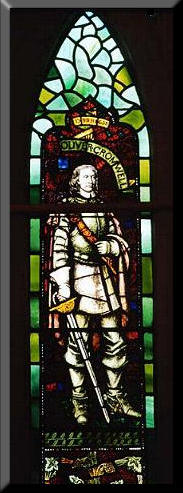
2. Oliver Cromwell - The Lord Protector was born in Huntingdon on April 25th 1599 and died in 1658.e
Cromwell’s reputation is considered by many to have been significantly blackened as a consequence of what happened in Ireland in the forty weeks from August 1649 to May 1650.
Biographers of Cromwell have differed on this subject and the truth of what happened is often obscured by myth and legend. It served the interests of both sides at the time to exaggerate the outcomes of Cromwell’s Irish Campaign, and the axiom that truth is the first casualty of war was as applicable in the 17th century as in the 21st.

3. Charles 11 1630 - 1685.
The period of Charles II's reign (1660-1667) was that of the
administration of Lord Clarendon, the principal author of the Restoration
settlement. The King was granted the large revenue of 1,300,000. The naval and
military forces were disbanded, but Charles managed to retain under the name of
guards three regiments, which remained the nucleus of a standing army. The
settlement of estates on a legal basis provided ill for a large number of the
King's adherents who had impoverished themselves in his cause. The King's honour
was directly involved in their compensation and, except for the gratification of
a few individuals, was tarnished by his neglect to afford them relief. Charles
used his influence to carry through parliament the Act of Indemnity, and the
execution of some of the regicides was a measure not more severe than was to be
expected in the times and circumstances; but that of Sir Henry Vane, who was not
a regicide and whose life Charles had promised the parliament to spare in case
of his condemnation, was brought about by Charles's personal insistence for revenge.
King Charles II and James Standish the Vice Treasurer of Ireland
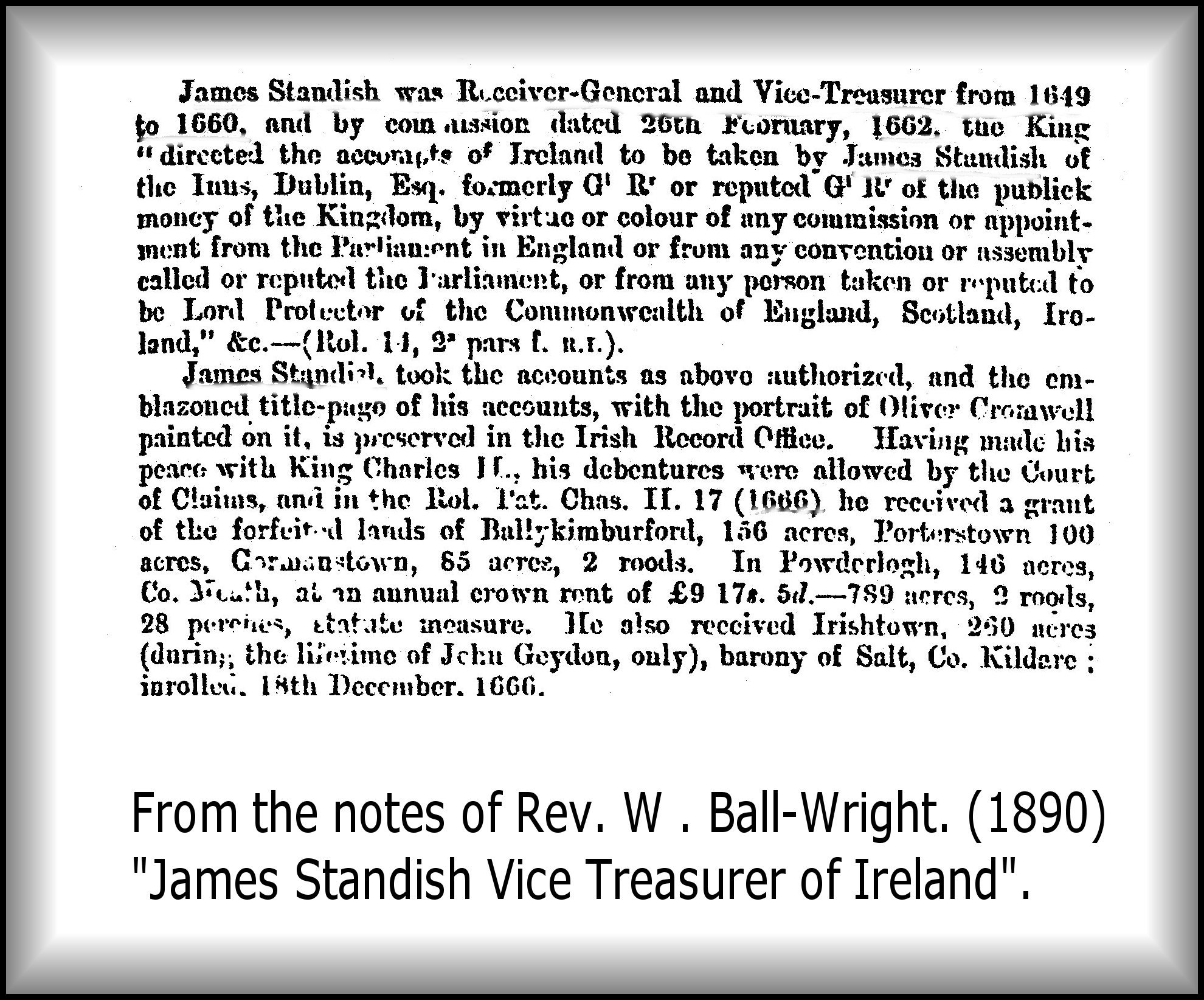

Extract -: from the Mason Family History.
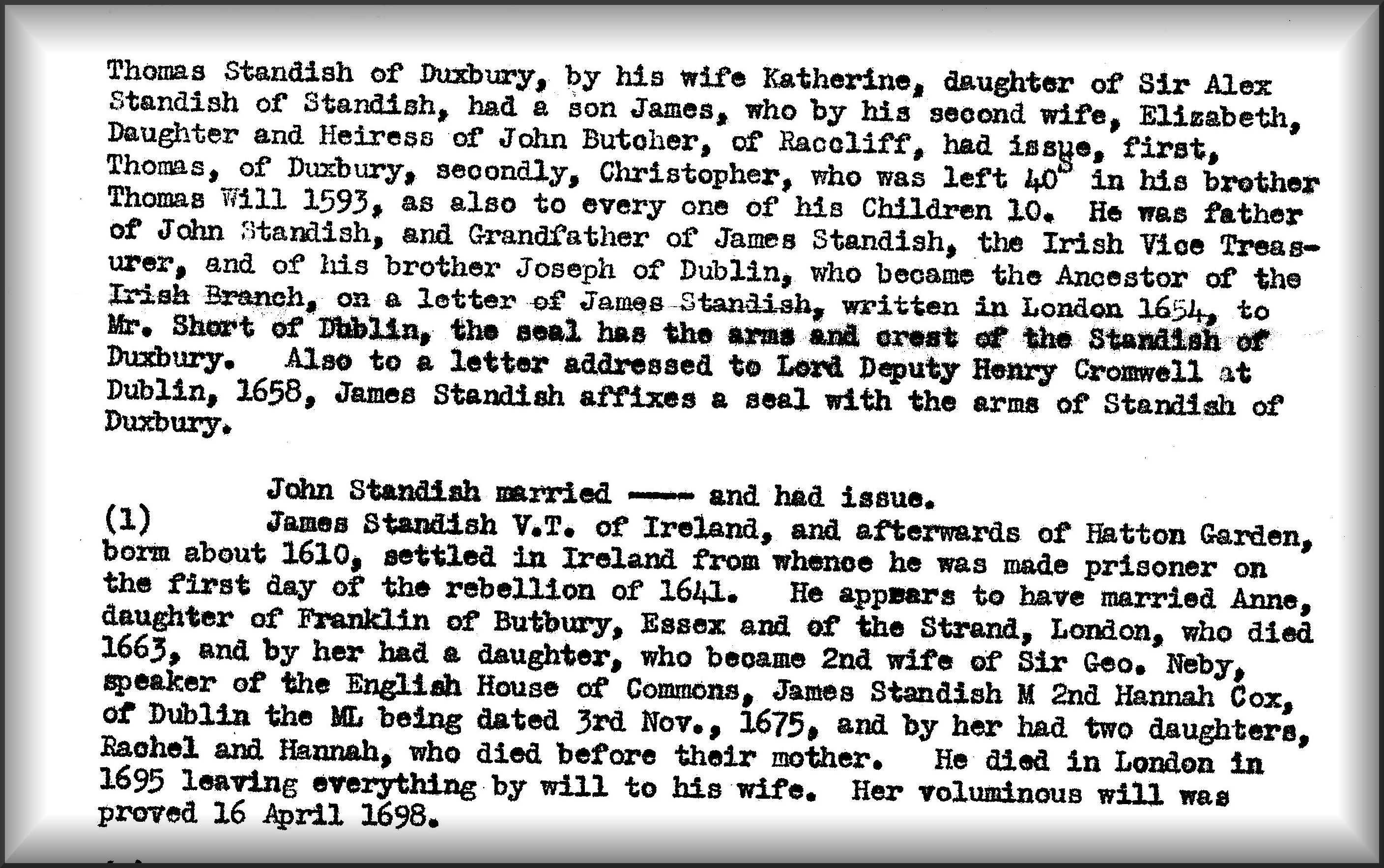
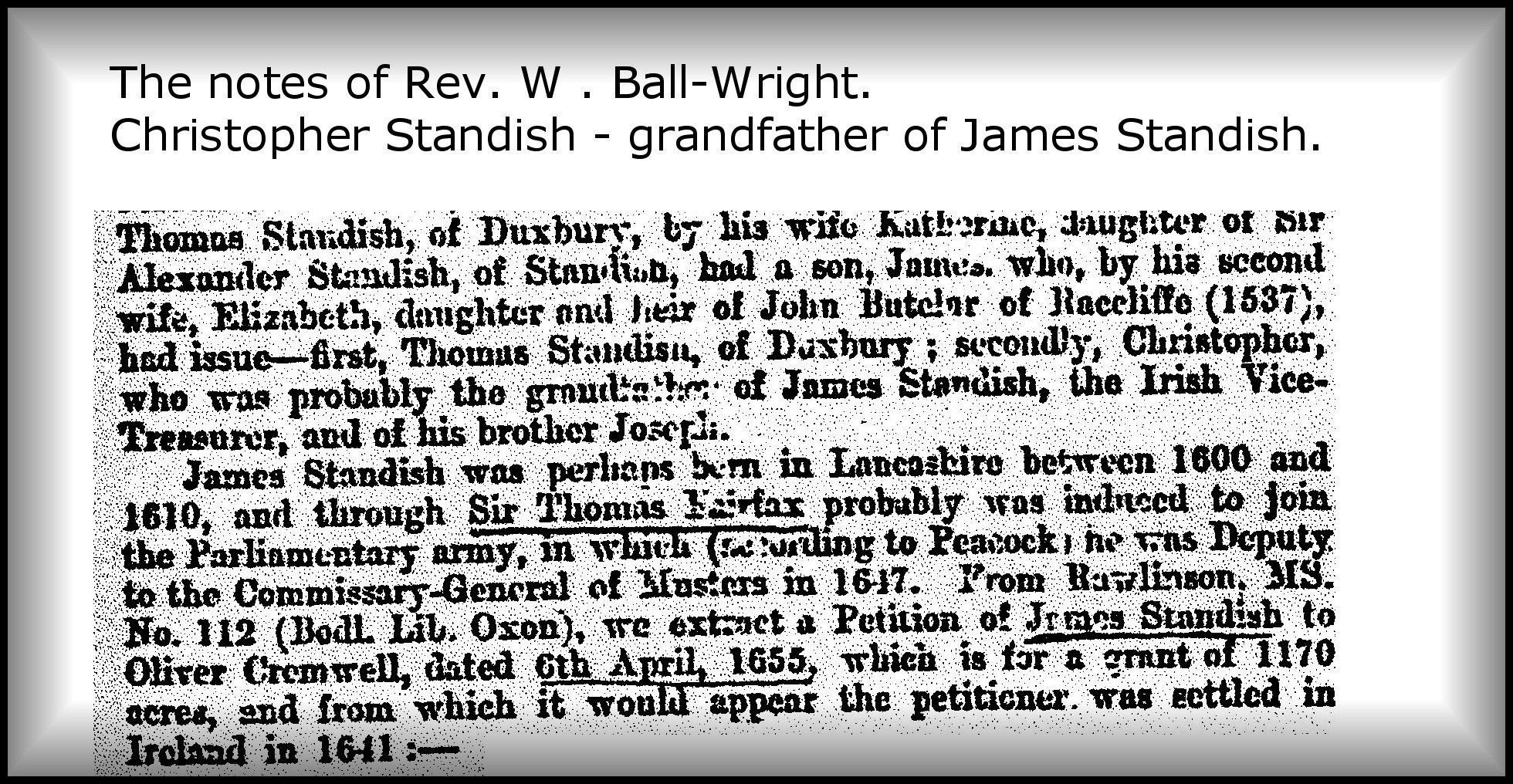
Thomas Standish clearly indicates in his Will that his brother Christopher has several children and that Christopher is still alive in 1600.
THE WILL OF THOMAS STANDISH "OF DUXBURY, IN THE COUNTY OF LANCASTER, ESQUIRE. MADE 1593. PROVED 1600.
IN the name of lorde god the xviijth daye of June in the yere one thousande fyve hundre the nyntye and three And in the xxxvth yere of the Reigne of or soveigne ladye Elizabethe by the grace of god. I Thomas Standishe of duckesburye in the Coutie of lancashire esquier sycke in bodye but of good and pfecte mynde and Remembrance laude and prayse bee unto almyghtie god, doe ordeyne and make my Testamente Conteyninge herein my laste Will in maner and forme as hereafter dothe appearc. That is to wyte fyrste and pryncipallie I gyve and bequethe my soule to almightie god my onlye maker and Redeemer trustinge in his great mercy and by the meryts of Christs Passion and Resurrection whereby I faithfullye doe belyve, that I shalbe one of the nomber of those that shalbee saved And my bodye to bee buryed wthin the pishe Churche of Chorley And for the disposynge of my worldlye goods I gyve and bequethe in man) and forme followinge, ffyrste and pryncipallie for all my howseholde goods belonginge to mee, wch are for the furnisshinge of my howse, and for all my Implements of howseholde, of what sorte or kynde so ever they bee of, whether of playte, pewter, copp, brasse, Iron, or woodde, or of any other sorte or kynde whatsover. And also all man) of furniture and necessaries belonginge unto husband rye beinge of hempe Iron or woodde, my will and mynde is that all the p’misses be devyded into three Equall pts whereof one thyrde pte I doe gyve unto Margaret my welbeloved wiffe to her owen use, And the other two thirde pts my will and mynde ys and I doe gyve the same unto my sonne Allexander Standish to his owen use. And for the Reste of my goods Cattell and debts what so ever quicke or deade after my debts and funlall dischardged my will and mynde is to have theym equallye devided into three equall pts whereof the fyrste pte I doe gyve unto Margaret my said welbeloved wiffe to have and enioye to her owen prop use. And one other thirde pte my will and mynde ys that my daughter Ellyn shall have to and for the p’fermente of her mariage, soe as shee be cotented to be Ruled and doe not marrye wthoute the pryvitie Consente or lykinge of Margaret my said Wiffe, or my sonne Allexander, wch said thyrdde pte is to bee payed unto her by my Executors at suche tyme as shee shalbe marryed. And in the meane tyme to bee used to her moste benefytte and profytt att the disposition and discrecion of Margaret my said wiffe and my said sonne Allexander Standish, and for the laste thirde pte of the said goods my will and mynde is, that yt shalbe to and for the paymentc of my iegacs and bequethes wich heareafter followe, ffyrste I gyve unto evye one of my chyldrens chyldern wich I am grand father unto iiju vjs viijd a peece. Itm. I gyve &c. of the said thirde pte unto my sonne Leonarde Standish xl11 soe as the said leonarde bee Contented and pleased to bee obedyente and Ruled by my said Wiffe untill suche tyme as hee shall accomplishe the age of xxj yeares and then to doe suche acts or acte as my said Wiflfe shall in reason require of hym to bee downe for the unitinge and knyttinge of hym in an assured and lovinge frendsippe and amy tie with his brother Alexander wich I pray to god maye soe bee as yet may bee for the greate comforte of all those that dothe love theym bothe. Also I gyve unto evye one of my three daughters Elizabethe, Jayne and Alice vjH xiijs iiijd a peece also I gyve unto evye one of my yomen suche as are my howseholde svants over and besyds theire waigs xxa a peece. Itm. I gyve. unto evye one of my worke svants ov and besids theire waigs xs apeece. And unto evye one of my maide svants over and besids theire waigs vs apeece. Itm. I gyve unto my brother Xtofter Standish xls and to evy one of his chyldren xs apeece. Itm. I gyve unto my sister Clemens xls and for the resydue of the said last thirde pte if there bee anye remaninge I gyve the same unto my sonne Allexander Standish. Itm. yt is my mynde and will and I gyve and assigne by these prsnts unto John Wygan and his assignes all that messuage and tefite lyinge and beeinge in heapy with all howses and lands there unto belonginge nowe in the sevall occupacon of the said John Wygan excepte that parcell of lande lyinge and beeinge upon Copthurste neare unto John Johnsons howse To have and to holde the said messuage howses and lands there unto beionginge excepte before excepted to the said John Wygan and his assignes for terme of lx yeares yf the said John Wygan doe fortune to lyve’so longe by the yerelye rents and svyce there of due and accustomed. Itm. yt is my will and mynde and I gyve and assigne by these prsnts unto Roger Leylonde and his assignes for his svice downe ail that messuage and terite lyinge and beinge in Whytel in the Woodds with all howses and lands there unto belonginge nowe in the tenure holdinge or occupacon of the said Roger or of his assignes To have and to holde the said messuage howses and lands there unto belonginge unto the said Roger Leylande and his assignes for terme of ix yeres if the said Roger leylonde and Alice nowe his Wiffe or other of them so longe doe fortune to lyve by the yerely rents and svics thereof due and accustomed, and of this my laste will or testamente I doe constitute Margaret my welbeloved Wiffe and my lovinge sonne Allexander Standish my true and lawfull executors and for supvisors of the same I require to be my lovinge sonneinlawes and friends Xpofer Longworth,
Richard Houghton of Houghton esquier and Phiilippe Manwaringe and my lovinge brother in lawe Rauffe Assheton gyvinge unto eche of theym for a token of Remembrauce xs a peece. Also I doe by this my will Revoke and adnihillate all former Wills what soever they be whether by woorde or wrytinge.
(Signed) THOMAS STANDISHE. [Proved September 29,1600.]
The testator was the eldest, son and heir of James Standish of Duxbury, Esq., by his wife Elizabeth, daughter of John Butler, Esq.
He married Margaret, daughter of Sir Richard Hoghton of Hoghton, knight, by whom he had issue. His Inquisition post mortem, which was taken at Leigh on October 9th 1599 states that he died at Duxbury April 13, 1599, and that Alexander Standish, his son and heir, was then 29 years of age.
Standish of Duxbury Deed date 1566 Private Collection.
Christopher Standish uses the common Seal of the Standish family of Duxbury on this document.
Bond - Christopher Standish to John Standish -1556.
Nov[er]int univ[er]si p[er] p[rese]ntes me Chr[ist]oferu[m] Standyssh filiu[m] Jacobi Standyssh de Duckesbury in Comfitatu] Lancastr[ie] armigeri teneri et firmiter obligari Joh[ann]i Standyssh
In vigint[i] libris bone et legal [is] monet[e] Anglie Solvend[is] eidem Joh[ann]i aut suo certo attorn[ato] executor[ibus] sive administr[atoribus] suis in fest[o] natalis d[omi]ni p[rox]ime futur[o] post dat[am] p[rese]ntiu[m]
Ad q[ua]m quidem soluc[i]o[n]em b[e]n[e] et fidel[ite]r faciend[am] Obligo me heredes executorjes] et administr[atores] meos firmiter p[er] p[rese]ntes Sigillo meo sigillat[os]
Dat[os] tercio die Decembr[is] Annis Regnorfum] Ph[ilipp]i et Marie dei gr[ati]a Anglie Franc[ie] et utriusq[ue] Cicilie Jerusalem et Hib[er]nie fidei defensor[um] Archducu[m] Austrie Ducu[m] Mediolani Burgundie et Brabantie comitu[m] Haspurgi Flandrie et Tiroli tercio et quarto
p[er] me Xp[ist]offor[um] Standishe
[May all men know, by these presents, that I, Christopher Standish, the son of James Standish of Duxbury in the County of Lancaster, esquire, am held and firmly bounden unto John Standish,
In the sum of twenty pounds of good and lawful money of England, to be paid to the same John, or his certain attorney, his executors or administrators, on the Feast of the Birth of our Lord next coming after the date of these presents.
To which payment, indeed, well and faithfully to be made, I do, by these presents, sealed with my seal, firmly bind myself, my heirs, executors and administrators.
Dated the third day of December in the third and fourth years of the reigns of Philip and Mary, by the grace of God, [King and Queen] of England, France and both Sicilies, Jerusalem and Ireland, defenders of the faith, Archdukes of Austria, Dukes of Milan, Burgundy and Brabant, Counts of Hapsburg, Flanders and Tyrol]
The condiclijon of this obligac[i]on ys such,
That if the w[i]thin bounden Chr[ist]ofer Standyssh, his executours and assignes,
Doe at all tymes hereaft[er] [well] and truly observe, p[er]forme, fulfill and kepe all and singul[a]r coven[au]ntes, grauntes, articles [and] agrem[en]tes conteyned and sp[ec]yfied in one paier of Indentures, made betwene the w[i]thin [bounden] Chr[ist]ofer Standyssh of th'one p[ar]tie, and the w[i]thin named John Standish of the last testament of th'other p[ar]tie, bering date the daie of the date hereof, w[hi]ch in the same Indentures, on the p[ar]tie and behalf of the seid Chr[ist]ofer, are to be obs[er]ved and kept,
And alsoe if the w[i]thin named John Standishe Doe quietlie receyve the wolle p[ro]fytt of there mylle in Duckesbury in the com[itatu] [county] of Lancastr[e] from Pentycost next comeyng aft[er] [the] date hereof untill he, the said John, shall have clerelie receyved, of the p[ro]fe[tt] of the same mylle, the So[m]me of foure poundes of laufull money of England, according] to the teno[ur] and effect of one Dede thereof made to the said John Standish by the w[i]thin bounden Chr[ist]ofer Standyssh, likewise bering date w[i]th theis p[rese]nt[es],
That then this obligac[i]on to be voide, Or els to stande in effect.
Christofer Standyssh
Duxbury Mill in the ownership of Christopher Standish in the year 1556.
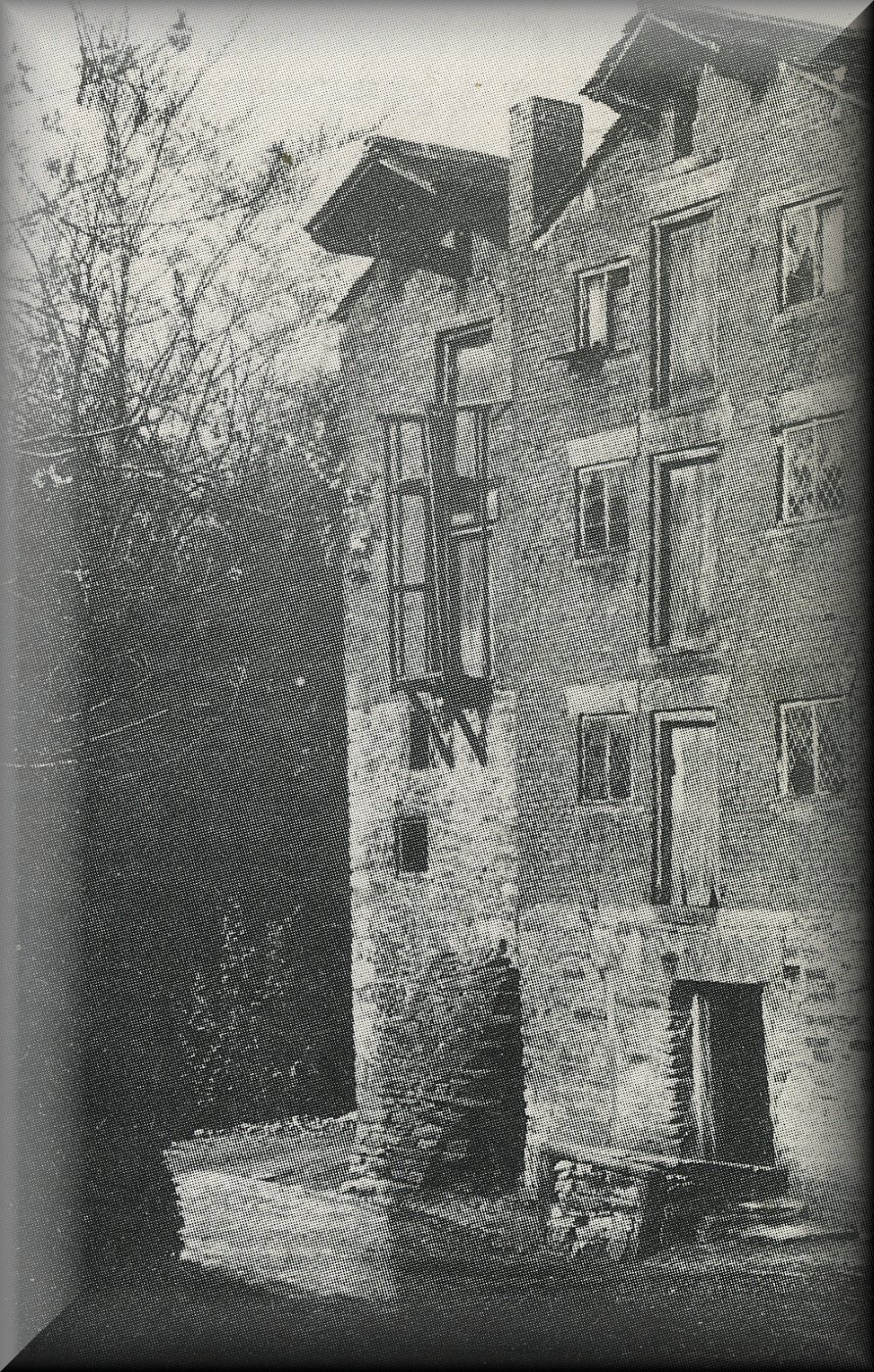
p[ro]fytt of there mylle in Duckesbury - 1556.
The Evidence for Two Christopher Standishes living in Duxbury 1563 – 1599.
1. Christopher Standish of Chorley brother of Thomas Standish Lord of the Manor of Duxbury date 1563.
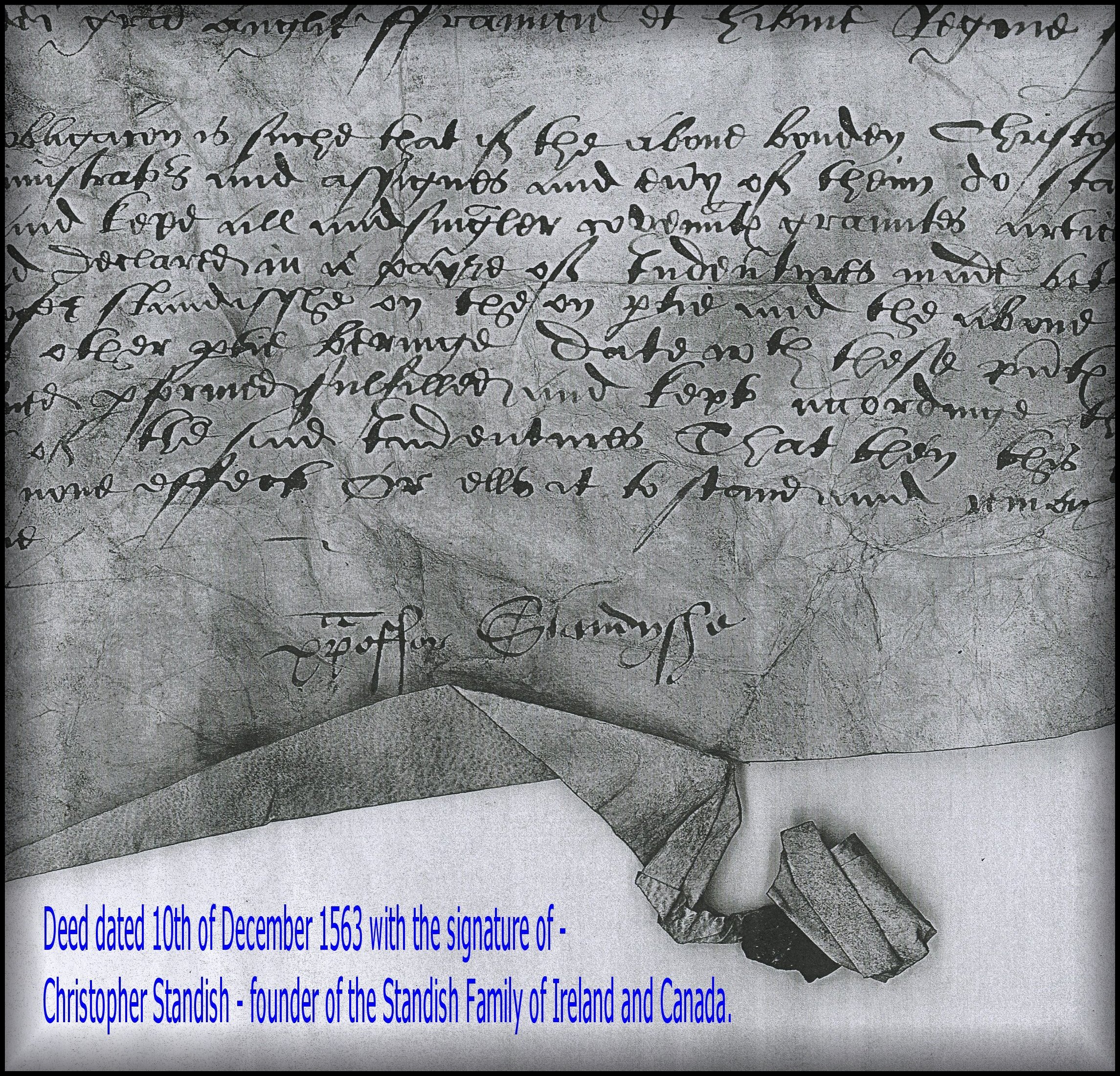
Lancashire Archives DP397/4/21. date 10 Dec. 1563
Christofer Standisshe of Chorley, gent, to Thomas his brother - Christofer Standisshe to keep covenants contained in 2 indentures made between Christofer Standisshe and Thomas Standisshe on date hereof. 10 Dec. 1563
2. Christopher Standish of Chorley brother of Thomas Standish Lord of the Manor of Duxbury date 15th August 1583.
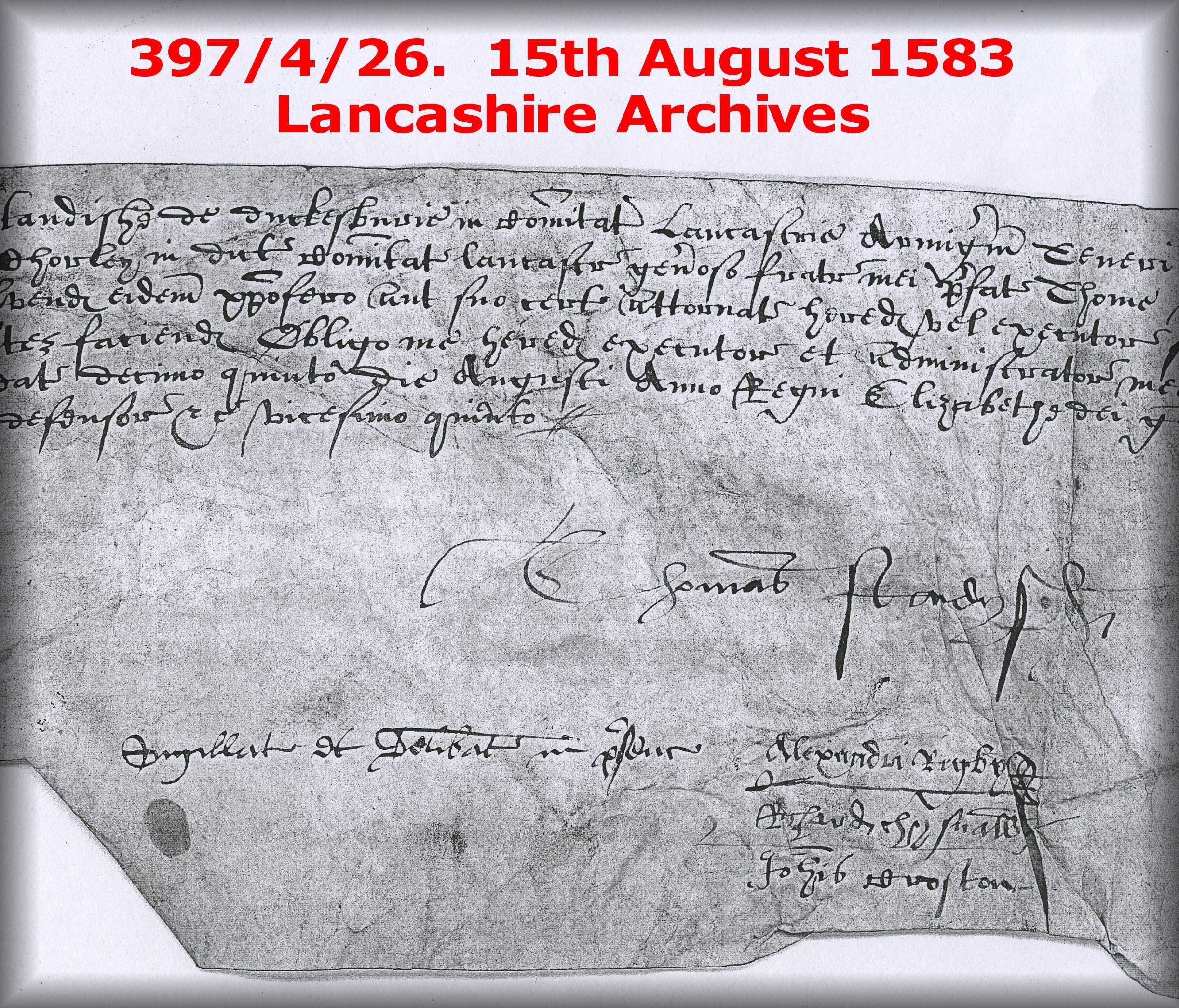 .
.
Lancashire Archives DP397/4/26. 15th August 1583.
Bond: in £300: Thomas Standishe of Duckesburie, esq. to Christofer Standishe of Chorley, gent, his brother, Thomas Standishe to fulfil award of Syr Gilbert Gerrard, ktv master of the Rolles, and of William Gerrarde, esq, brother of Sir Gilberte Gerrard concerning all matters between James Standish and Christofer Standishe, 15th August 1583.
3 Christopher Standish of Heapy cousin of Thomas Standish Lord of the Manor of Duxbury.
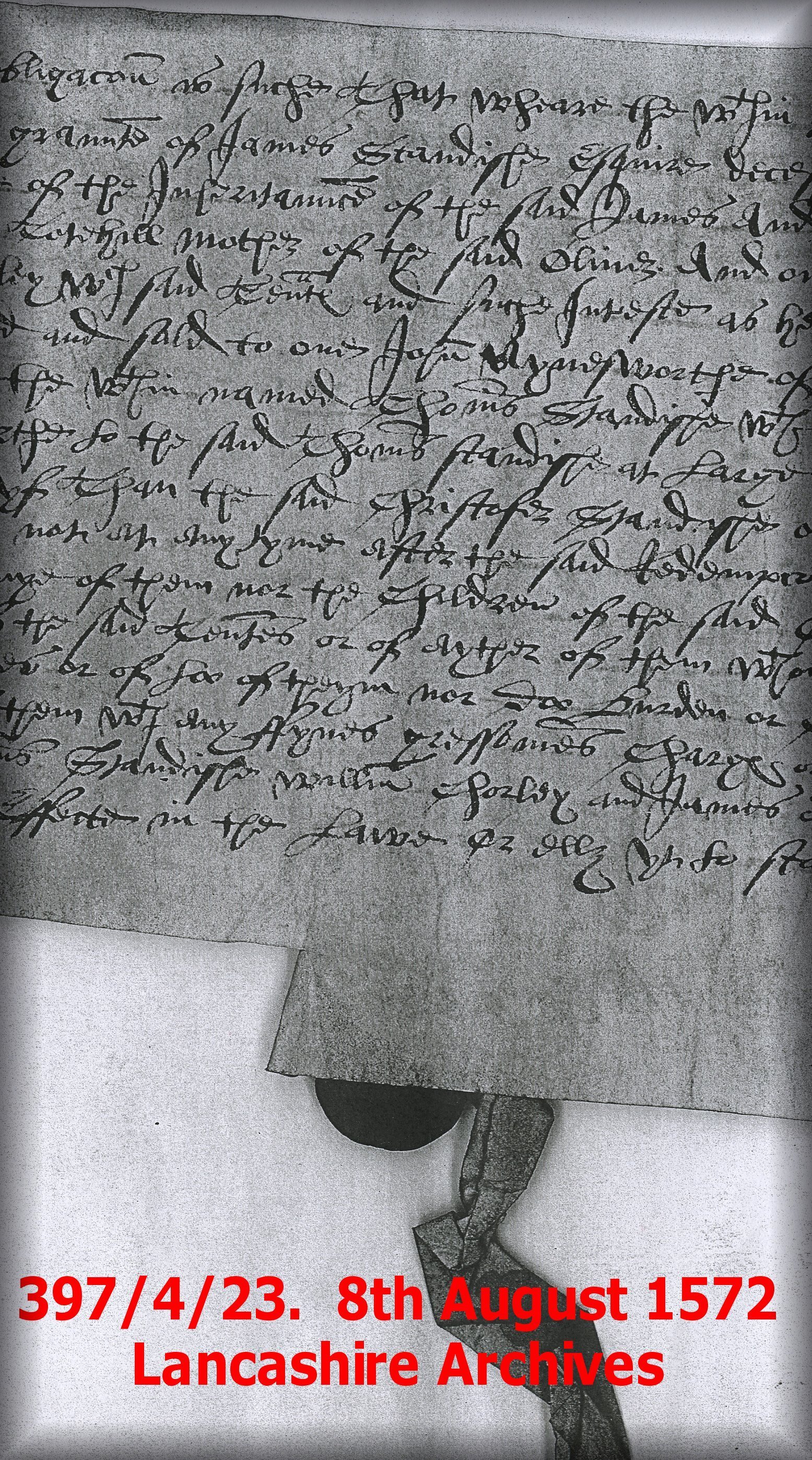
Lancashire Archives DP397/4/23. - date 8th August 1572
Bond: in 100 marks: Christofer Standishe of Heathe Charnocke, gent, to Thomas Standyshe of Duckesburie Esquire – Christofer Standishe not to expel or fine Oliver Totehill and Katherin late wife of William Totehill, mother of Oliver Totehill, tenants of a tenement in Anlazarghe and Hepaye or George Asteley, tenant of another tenement in Hepaye (botn tenements held by Christofer Standishe for life by gift of James Standish gent, deceased, his father), conveyed to John Aynesworth who mortgaged them to Thomas Standysshe , if redeemed from Thomas Standishe, without consent of Thomas Standishe Esquire, William Chorley, sen, and James Anderson, Esquire.
Births 1545 to 1610 in the Parish Register of the Church of St. Laurence Chorley Lancashire.
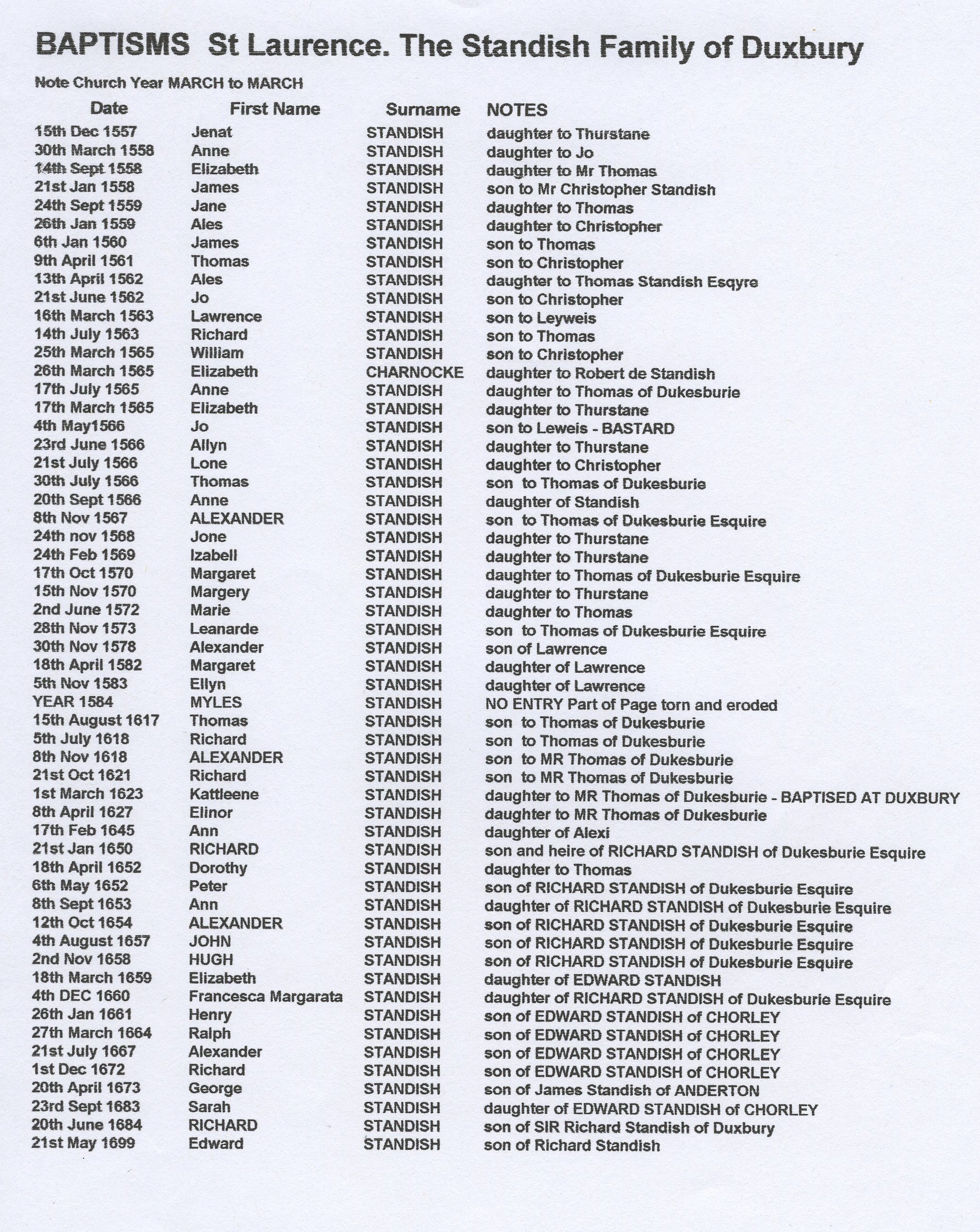
Christian Names used by Christopher Standish (brother or Cousin ?) for their sons 1557 – 1565.
1558 James
1561 Thomas
1562 Jo
1565 William
The entry in the parish register for 1558 indicates the birth of James Standish son of Mr Christopher Standish and the title "Mr "before the name Christopher Standish is a protocol that indicates the brother of the Lord of the Manor. This protocol is not repeated for any other entry of the name Christopher Standish 1558 - 1565. Both Christopher Standishes are indicated to have Children in Standish family documentation. Consequently the exact father for each recorded birth in the register of a son to Christopher Standish is open to question. There are unfortunately many gaps in the original register the most serious being the omission of any entries for the years 1553 to 1556 inclusive and 1599 to 1611 inclusive. The period 1553 t0 1556 is earlier than the birth in 1558 of James Standish first son of Mr Christopher Standish, but the omission of any entries for the years 1599 to 1610 could be the reason that the birth of James Standish the Vice Treasurer of Ireland is not recorded.
The parish register of the Church of St. Laurence Chorley does not record a child named John born the son of any Christopher Standish. It was a conclusion of the Reverend William Ball-Wright that James Standish the Vice Treasurer of Ireland "was probably the grandson of Christopher Standish”. The balance of probability based on the evidence of the Reverend William Ball-Wright - the Mason - Standish Irish family history - the history of the Standish family of Canada and the parish register of the Church of St. Laurence Chorley indicates that the birth of John Standish was more probable to have been recorded on the infamous torn and defaced page 39 of the parish register dated 1584, the only page in the parish register of the Church of St. Laurence where the name “John Christopher son of Mr. James Standishcould have been entered and thus accounted for.The probability is that John Standish was the Grandson of Christopher and the son of James Standish whose birth is recorded in the parish register in 1558. James Standish the Vice Treasurer of Ireland would be the great grandson of Christopher Standish.
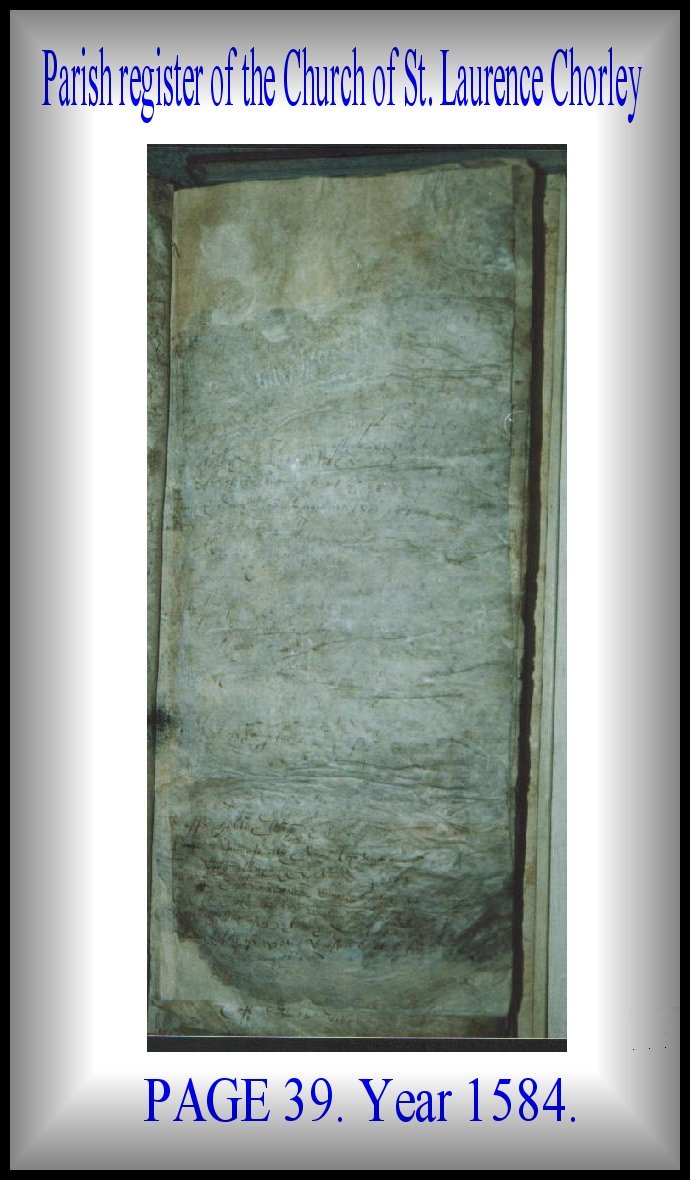
Page 39 of the parish register of the Church of St. Laurence Chorley is said to be the page upon which the birth of Myles Standish one of the founding fathers of America was recorded. Many scholars have suggested that the page was torn and defaced after the death of Sir Frank Standish in 1812 to wilfully disinherit the American descendants of Myles.
However if the name entered on the infamous torn and defaced page 39 of the parish register of the Church of St. Laurence dated 1584 was “John Christopher son of Mr. James Standish ” (not Myles Standish) then the alleged act of fraud in 1812 was intended to disinherit the Standish Family of Ireland. The descendants of Christopher Standish alive in Ireland in 1812 were Lydia Standish (nee Mason - widow of John Standish) John Standish their son was next in line to inherit the Duxbury Estates and the title Baronet Standish!
On a transaction in 1556 between Christopher Standish son of James Standish Esquire and John Standish of Duxbury (this document is part of a private collection) Christopher Standish applies the common seal of the Standish family of Duxbury to seal the document, the very same seal was used by James Standish Vice Treasurer of Ireland to seal private and public documents as witnessed and vouched for by Oliver Cromwell the Lord Protector and King Charles the second between the years 1649 –1661.
- Tony Christopher.
Hand written notes from the Family Tree of the MASON Family of Dublin Ireland.
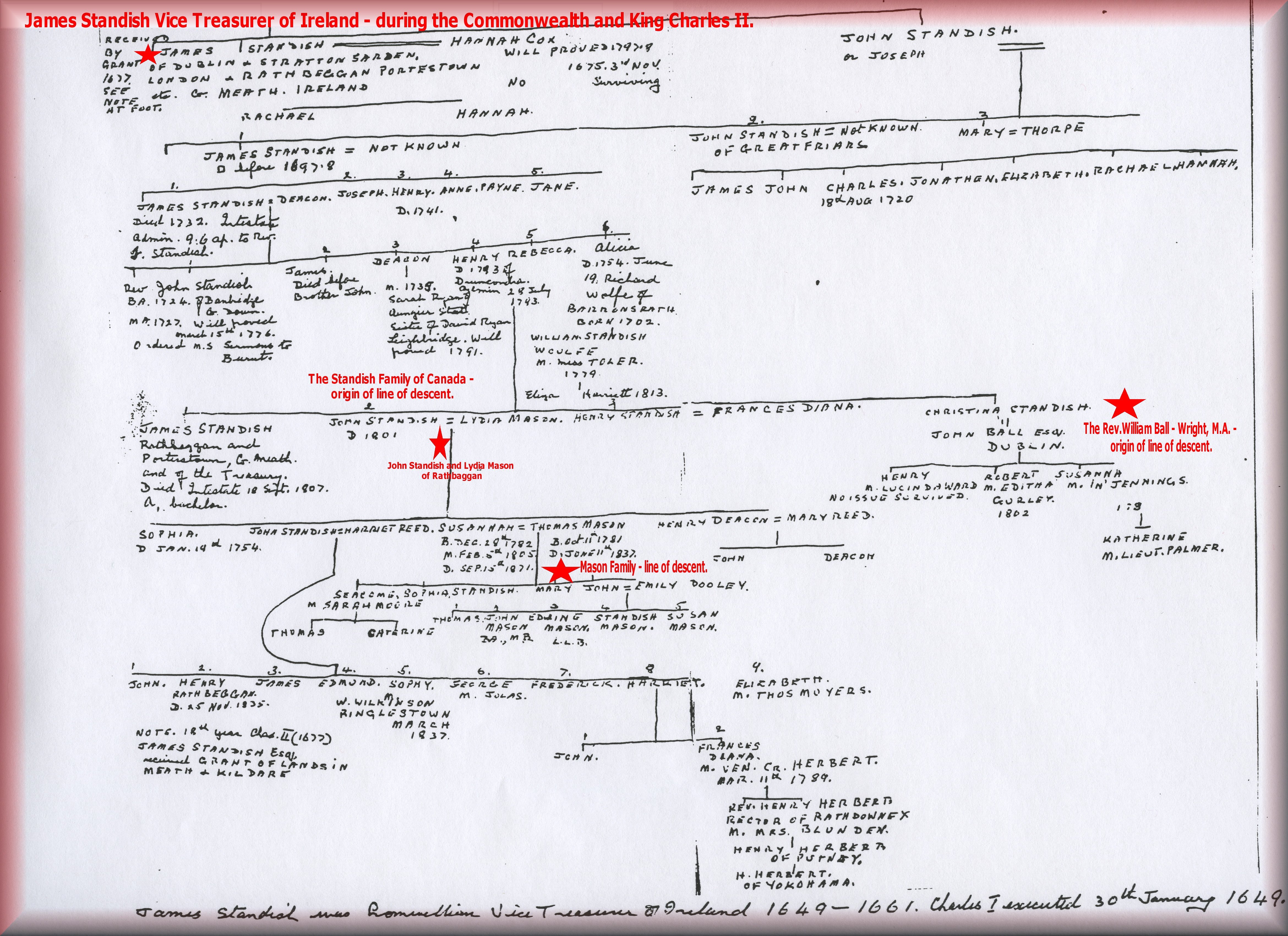

The Family of Christopher Standish born Duxbury England 1532.-
1. Christopher STANDISH (b.1532 Duxbury Lancashire England.)
sp: UNKNOWN
2. James STANDISH (b.1558)
sp: UNKNOWN
2a. John Standish (b.1584)
sp: UNKNOWN
3. James STANDISH (b.1610;d.1695) Vice-Treasurer of Ireland
3a. Joseph STANDISH (b.1612.)
sp: UNKNOWN
4. James STANDISH (b.1630;d.1698)
sp: Ann Cox
5. James STANDISH (d.1732)
sp: Rebbeca DEACON
6. Joseph STANDISH (b.1699)
6. John STANDISH (b.1701;d.1766)
6. James STANDISH (b.1704)
6. Deacon STANDISH (b.1707;d.1791)
6. HENRY STANDISH (b.1710)
sp: SUSANNA
7. Henry STANDISH (b.1730;d.1731)
7. James STANDISH (b.1735;d.1807)
7. JOHN STANDISH (b.1737;d.1797) -
sp: LYDIA MASON
I
I ---------Standish Family of Canada.
I
8. SUSANNA STANDISH (b.1781;d.1871)
sp: Thomas MASON (b.1781;m.1808;d.1837)
I
9. SEACOME MASON (b.1808;d.1892)
sp: Sarah Moore
10. THOMAS MASON (b.1840;d.1912)
sp: Sara Barry
11. Thomas Holmes MASON (b.1877;d.1958)
sp: Margaret Evelyn Gray (m.1908)
12. STANDISH MASON (b.1909;d.1969)
sp: UNKNOWN
13. Gilda MASON
13. Standish MASON - (descended from Thomas Mason and
Susana Standish married 1808) - the senior Standish descendant
of John Standish and Lydia Mason alive in Ireland 2008
13. James MASON
13. Richard MASON
12. Alexander MASON (b.1910)
sp: UNKNOWN
13. Margaret MASON (b.1943)
sp: R J Lewis
13. Jonathan MASON
12. Barry MASON
12. Dermot MASON

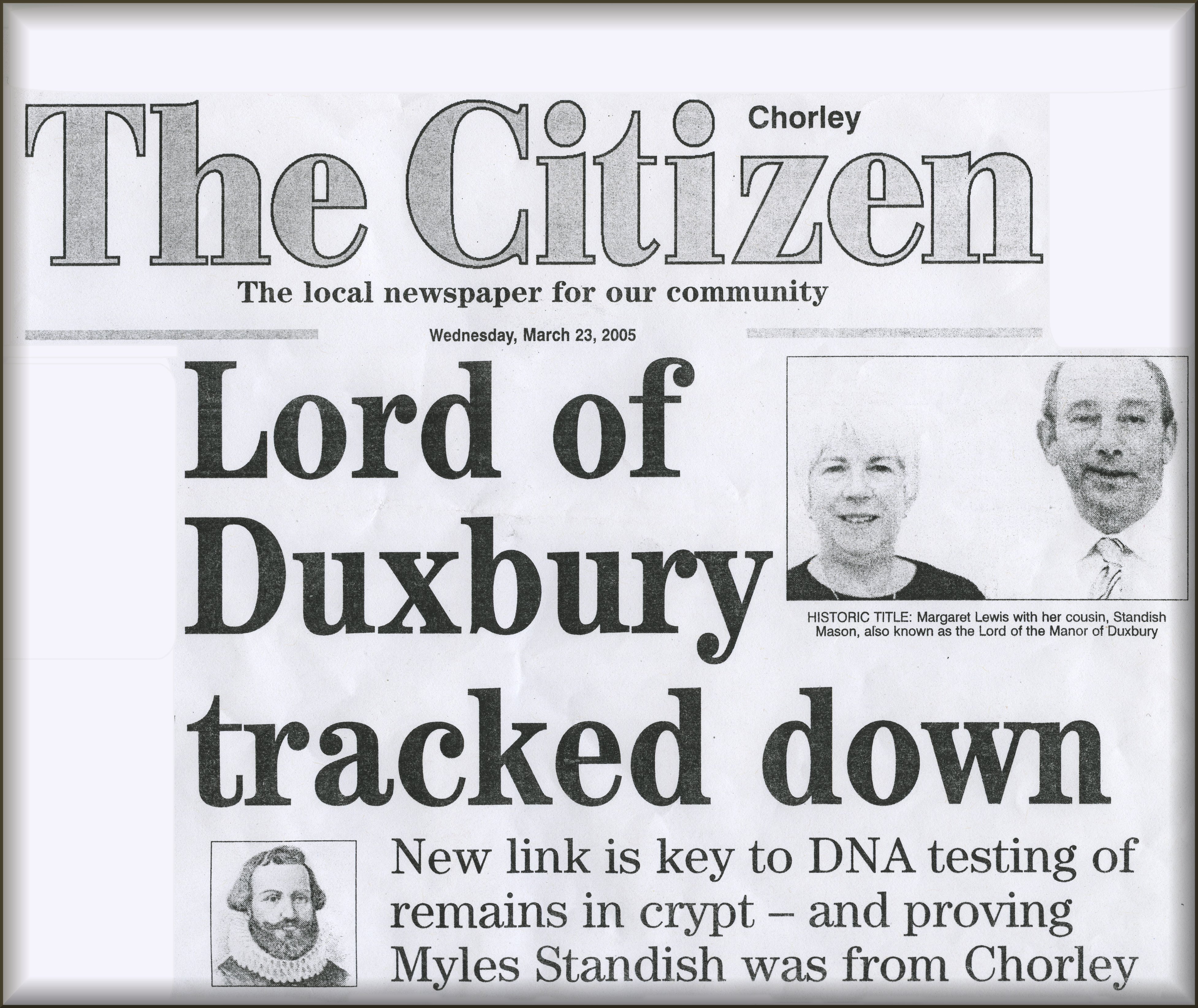
EXCLUSIVE by Chris Gee.
- Chris Gee.


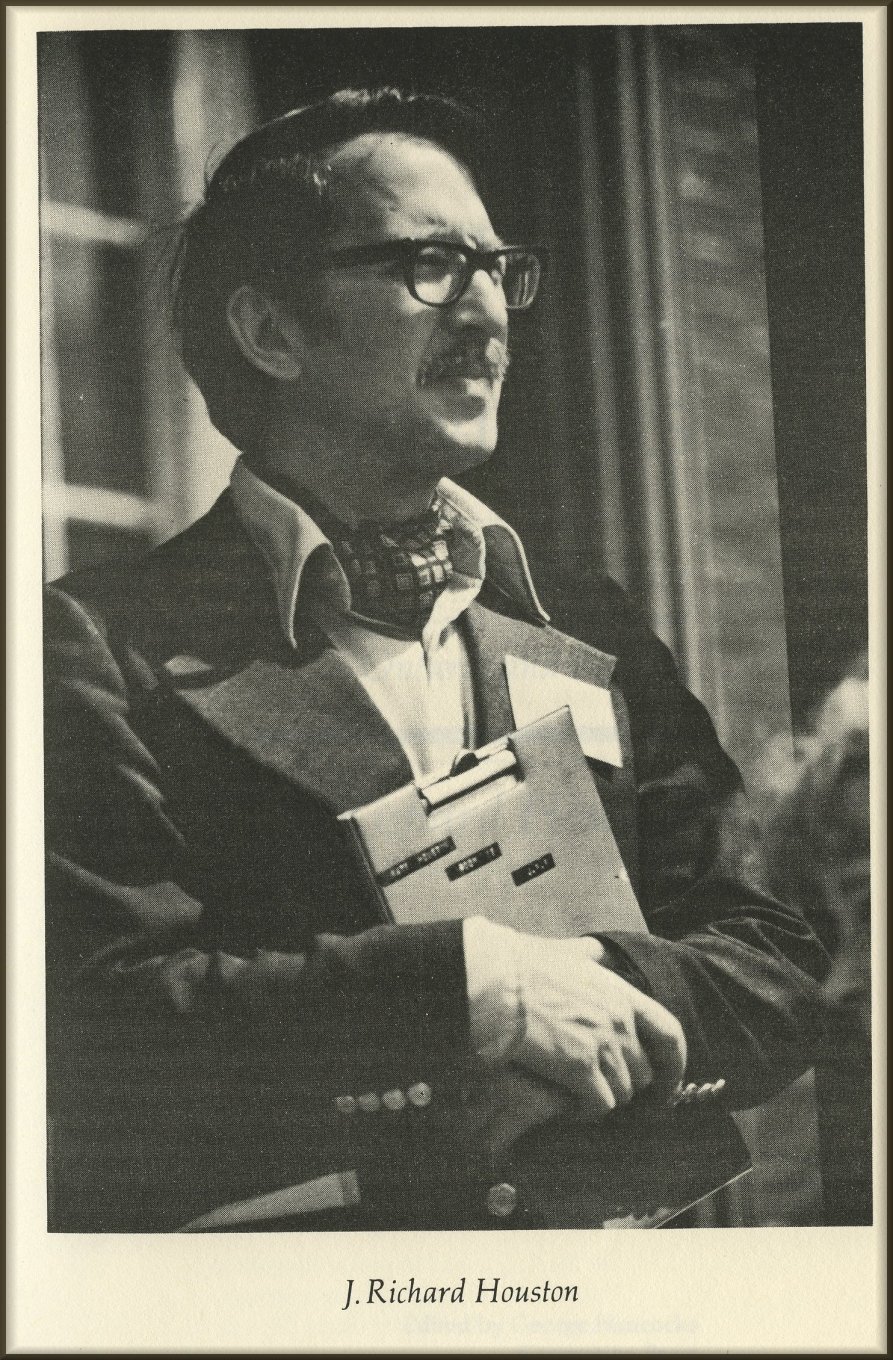
J. Richard Houston author of Numbering the Survivors: A History of
the Standish Family of Ireland, Ontario and Alberta.


The History of the Mason Family Business Dublin Ireland.
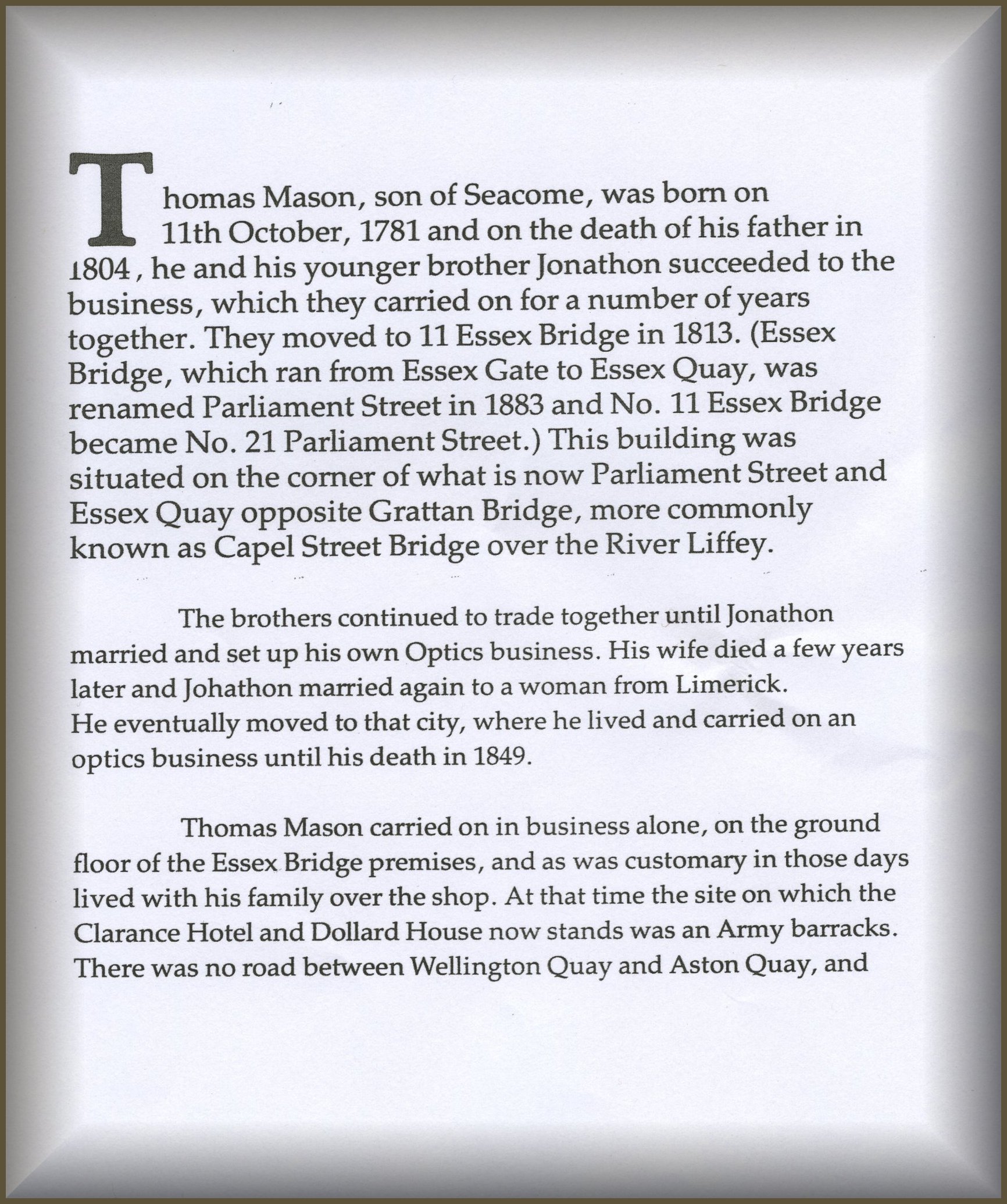
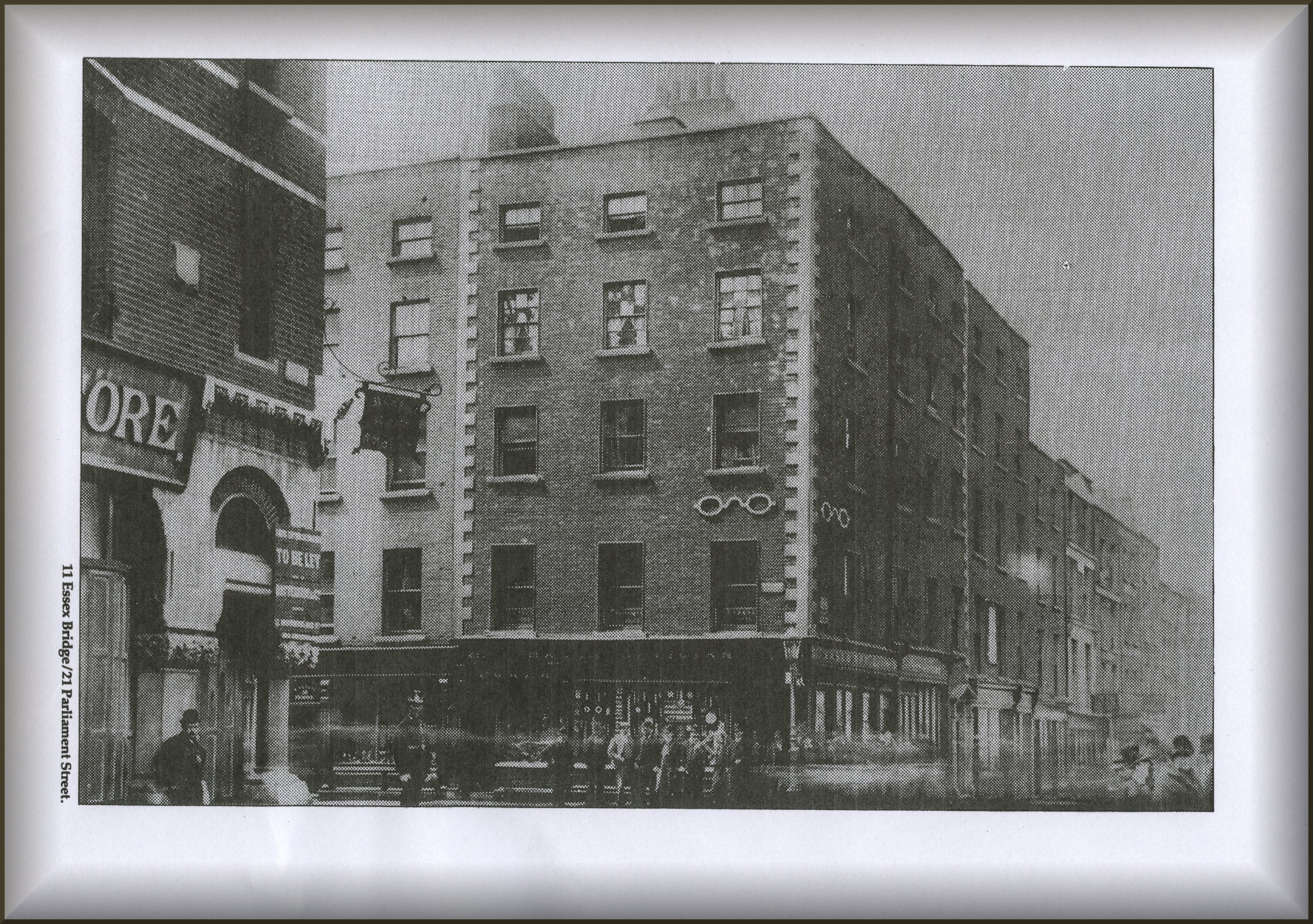
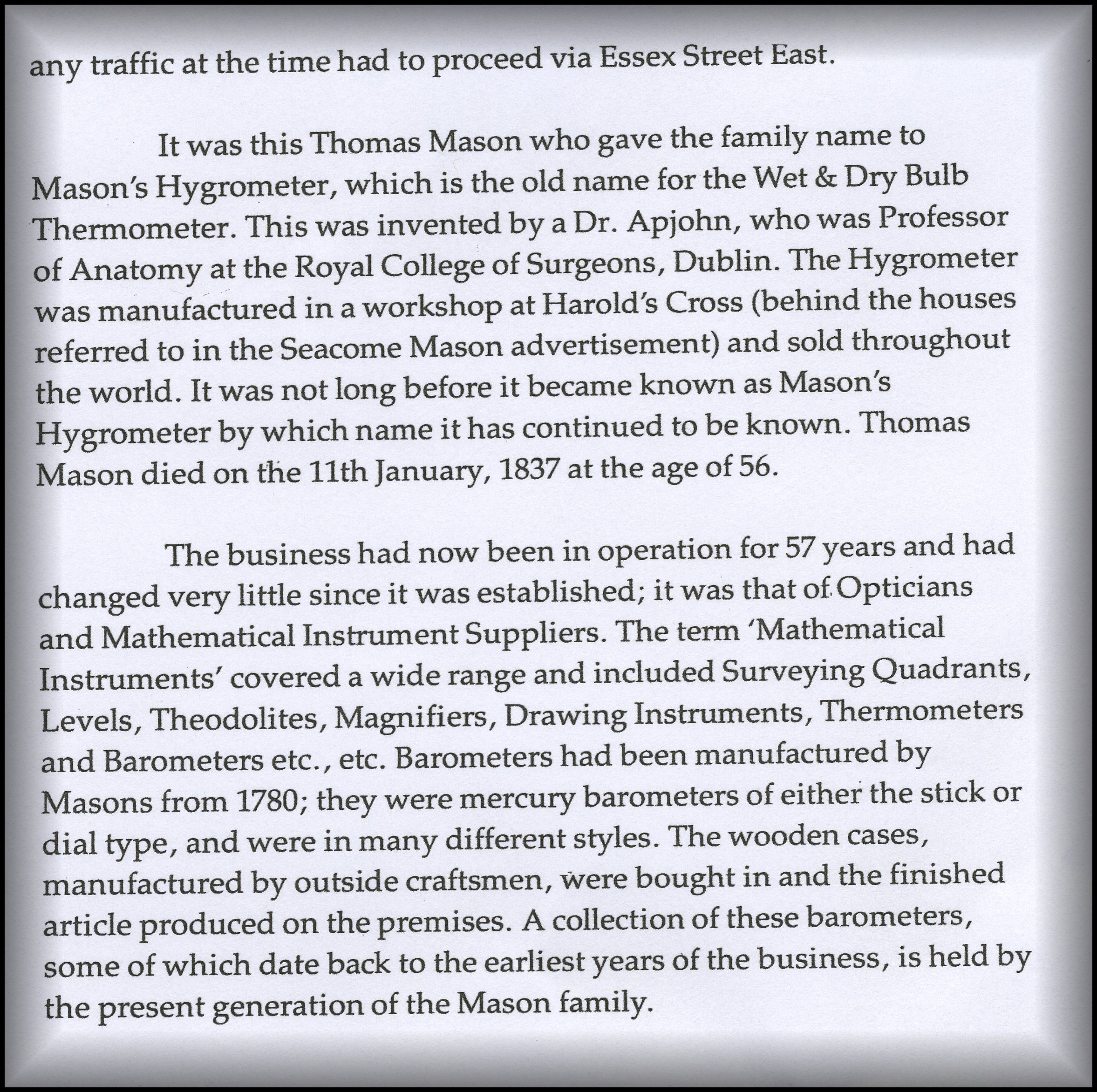
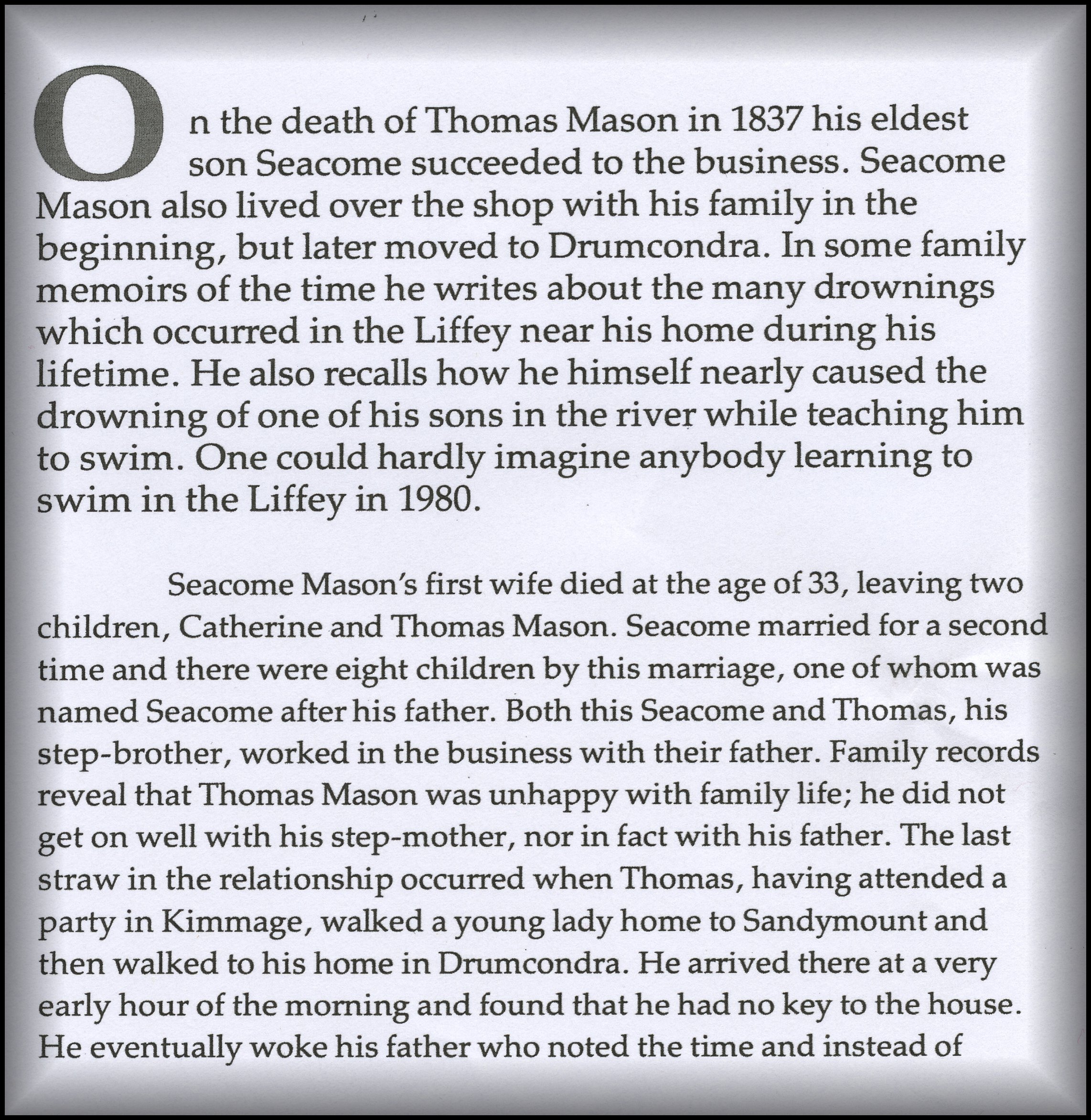
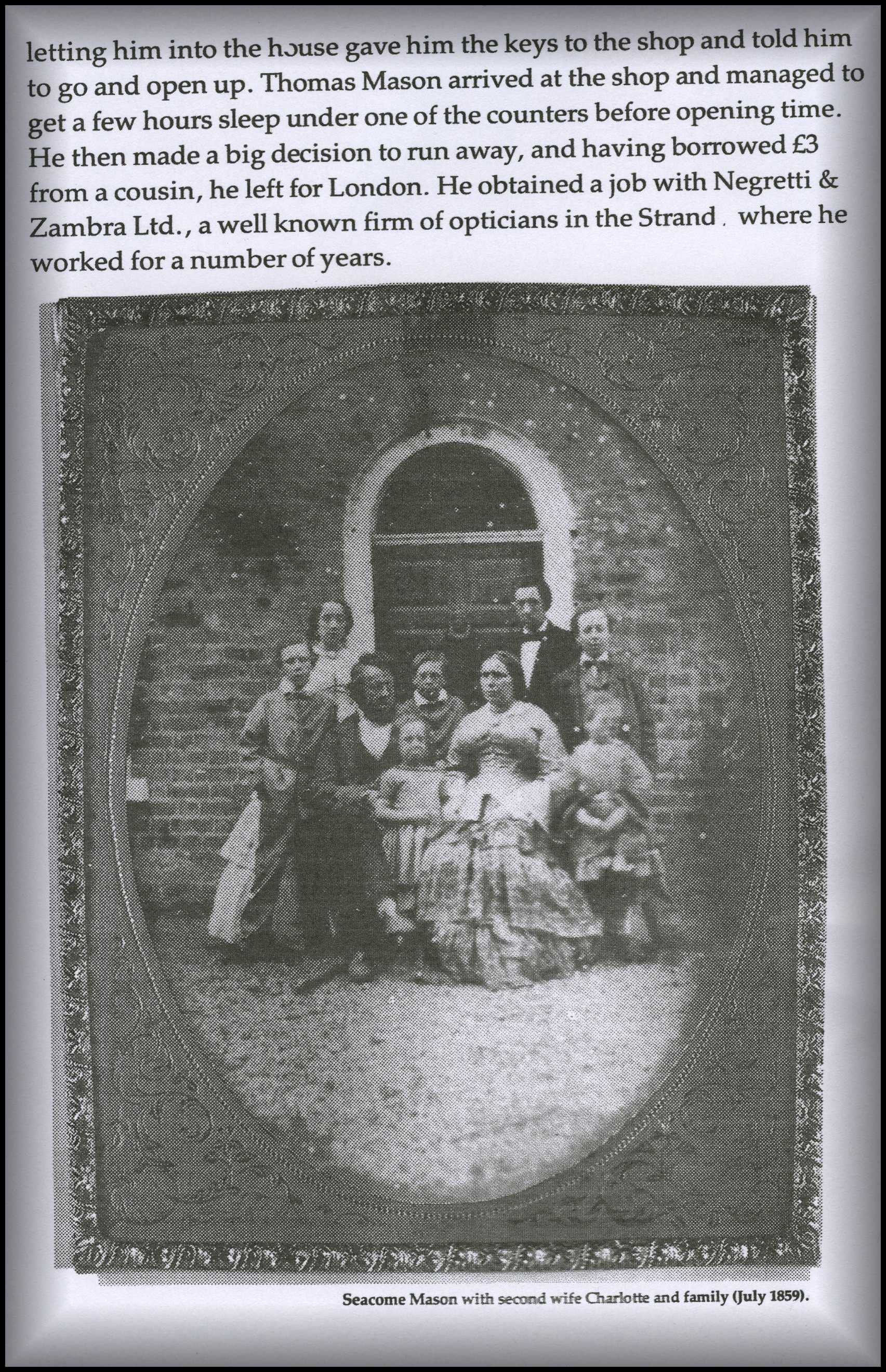
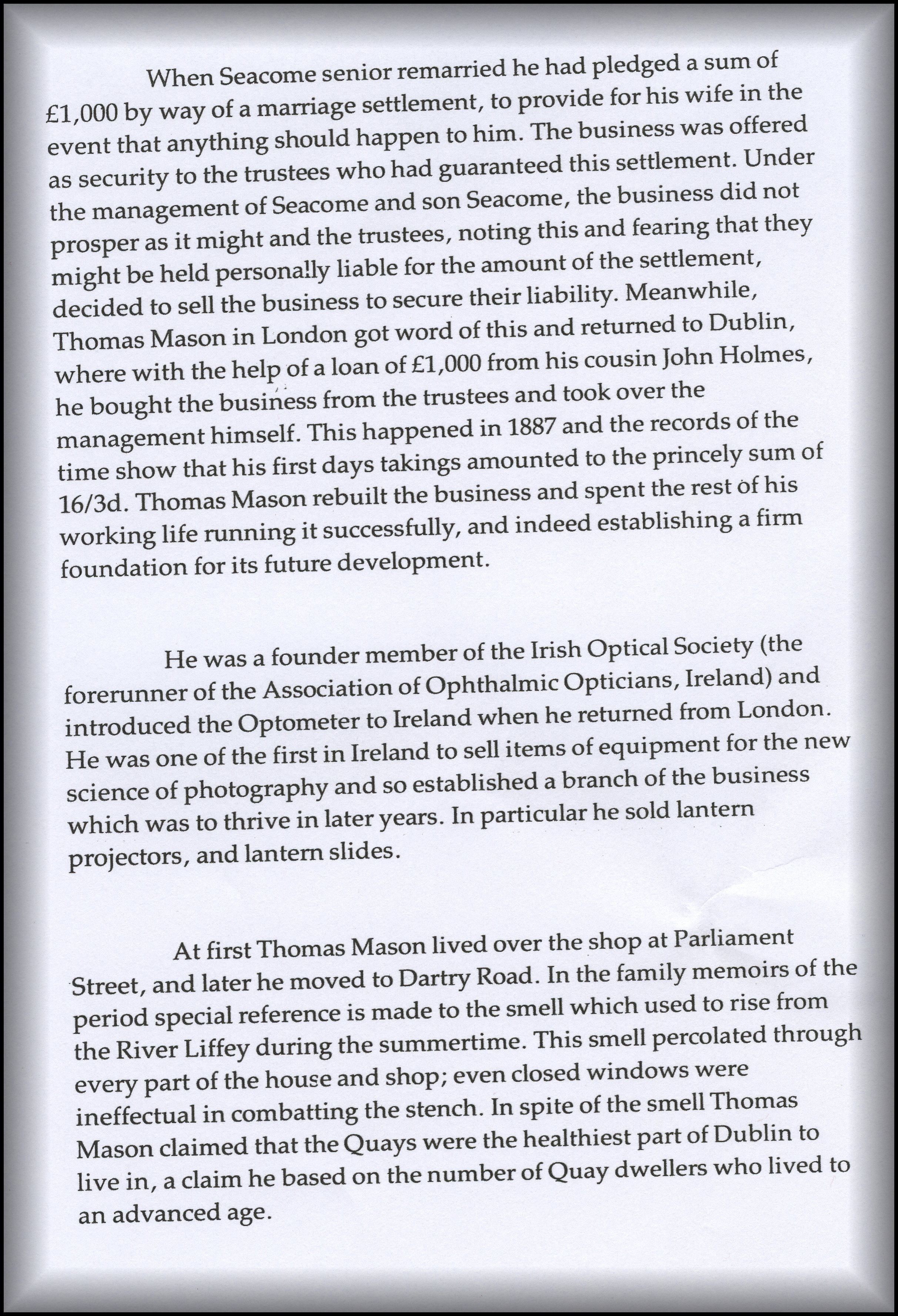
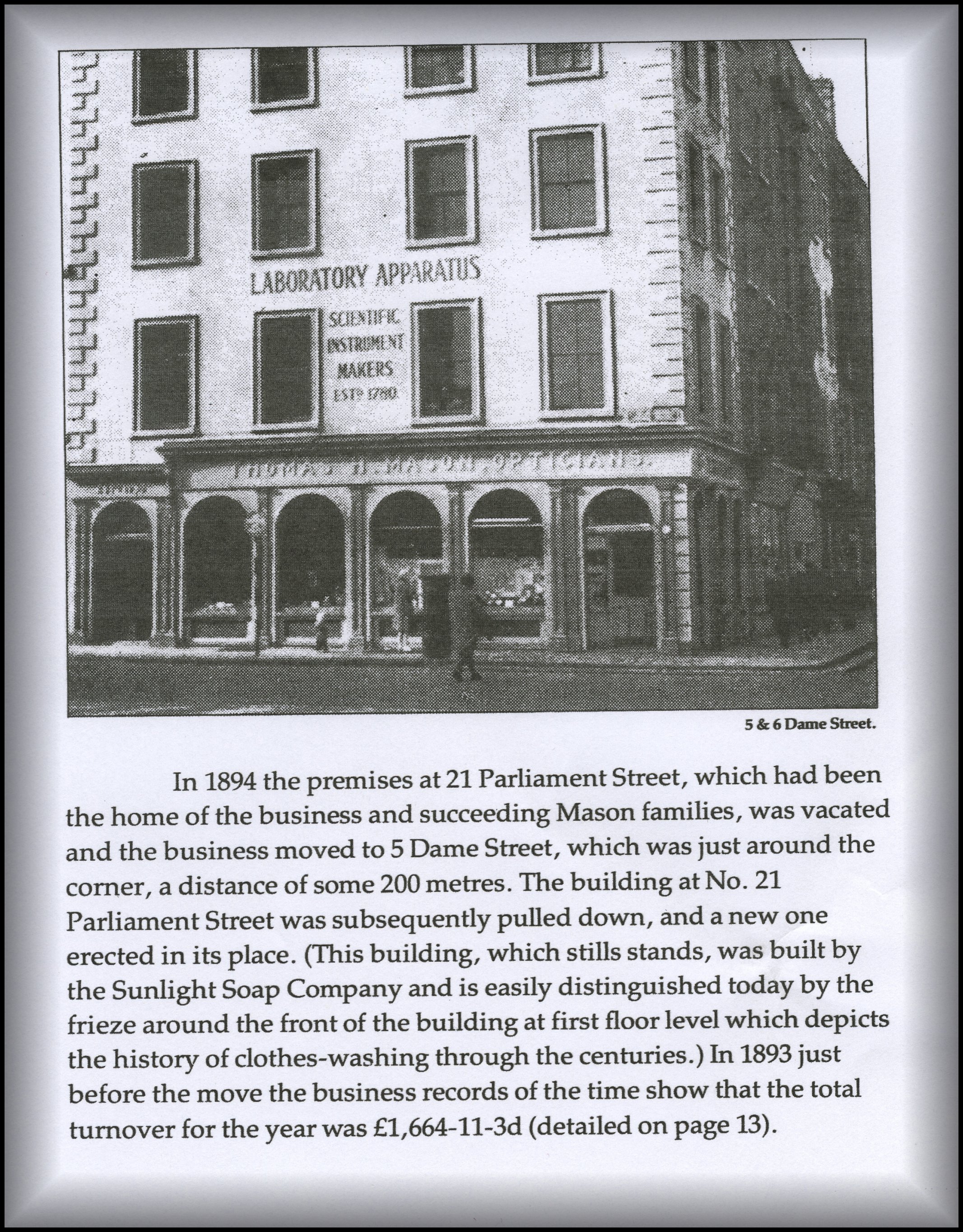
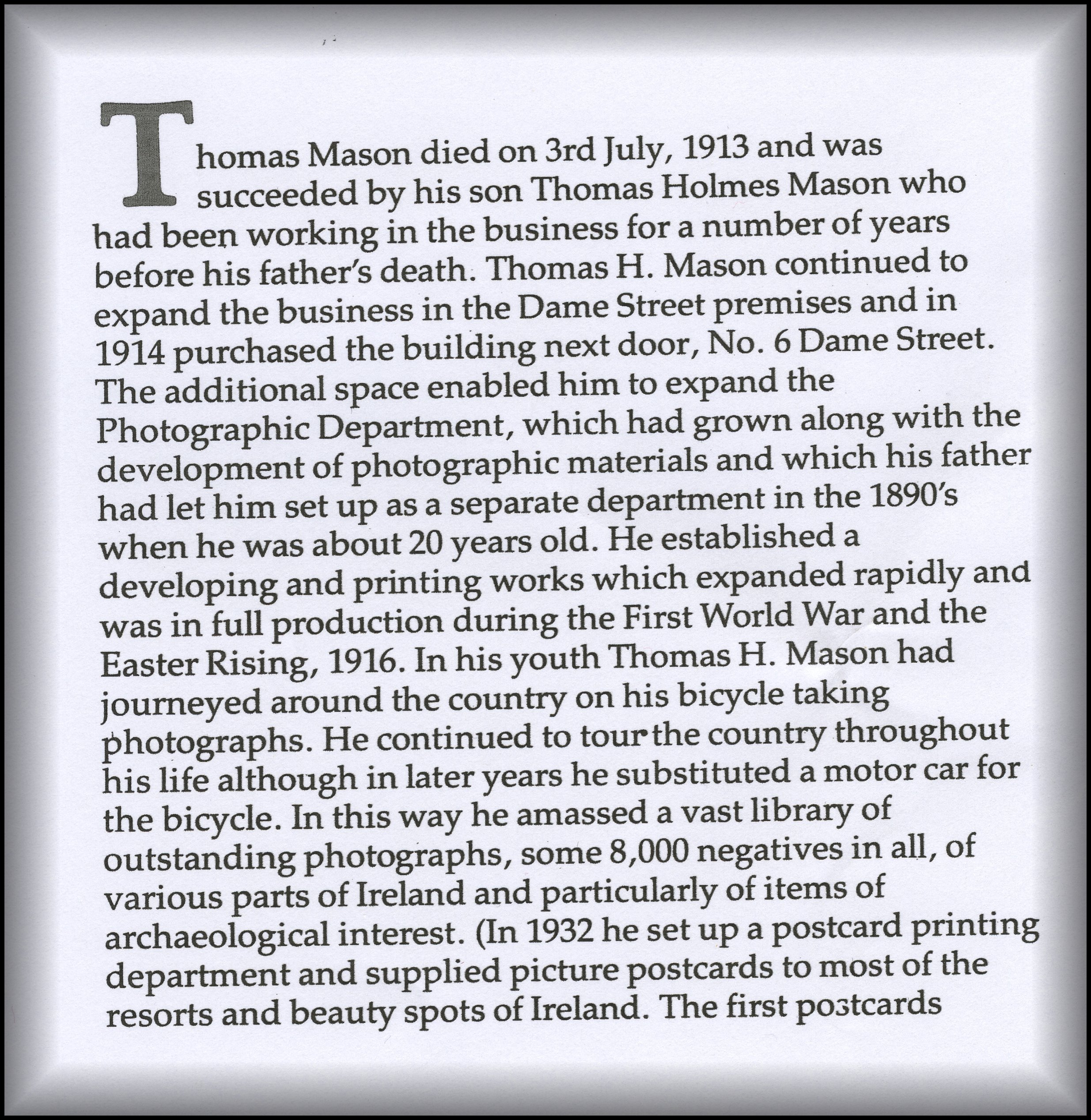
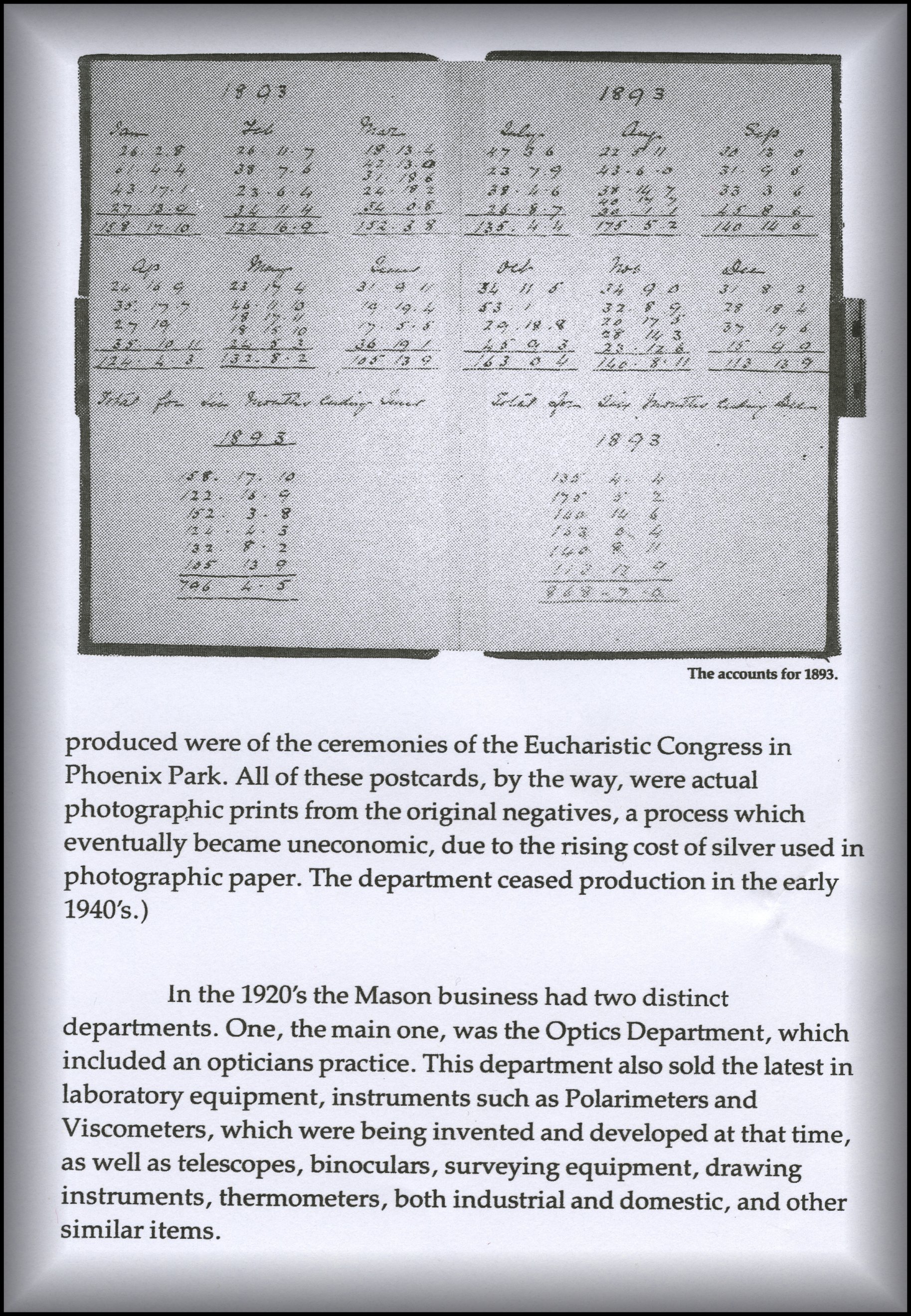
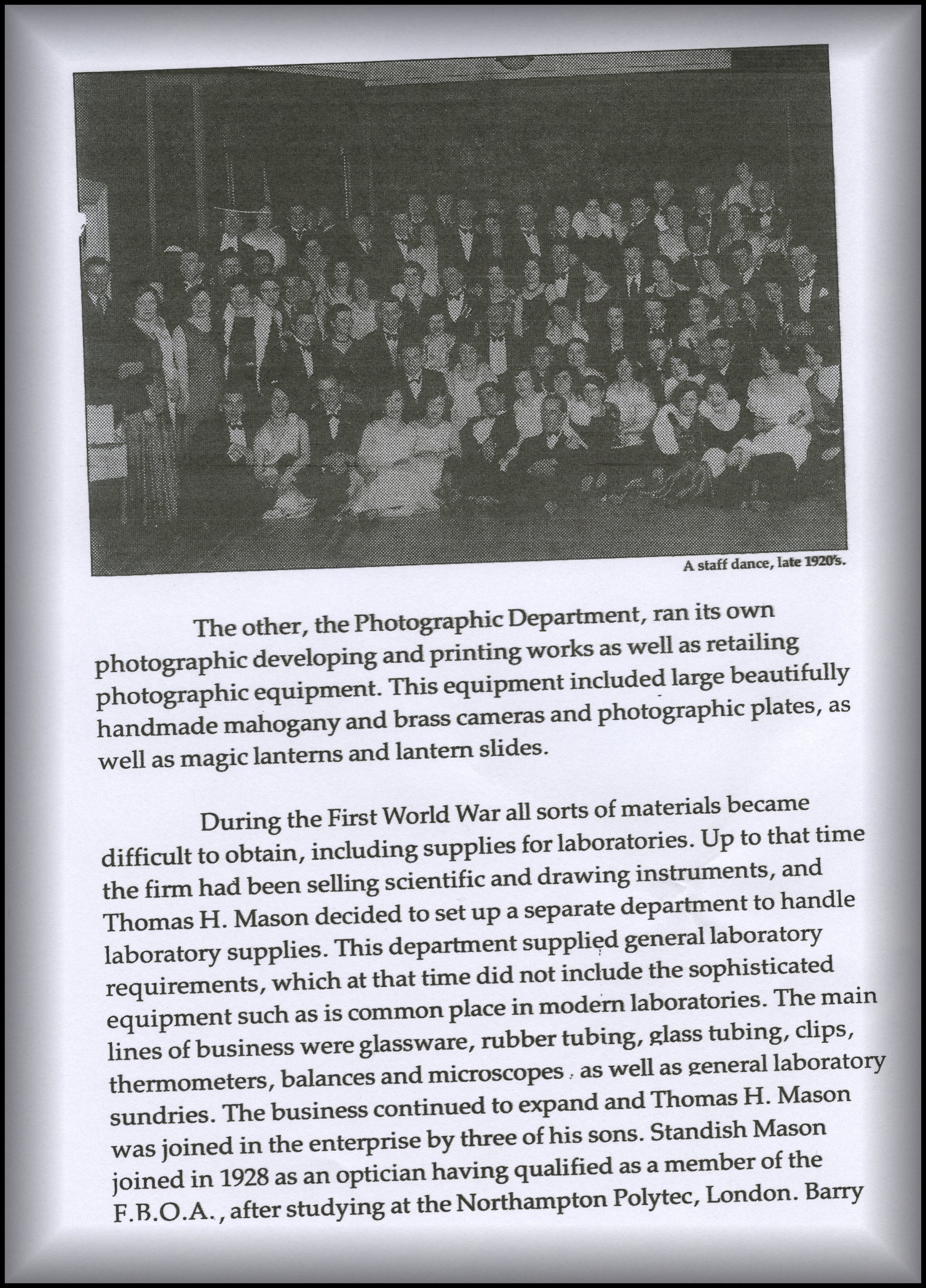
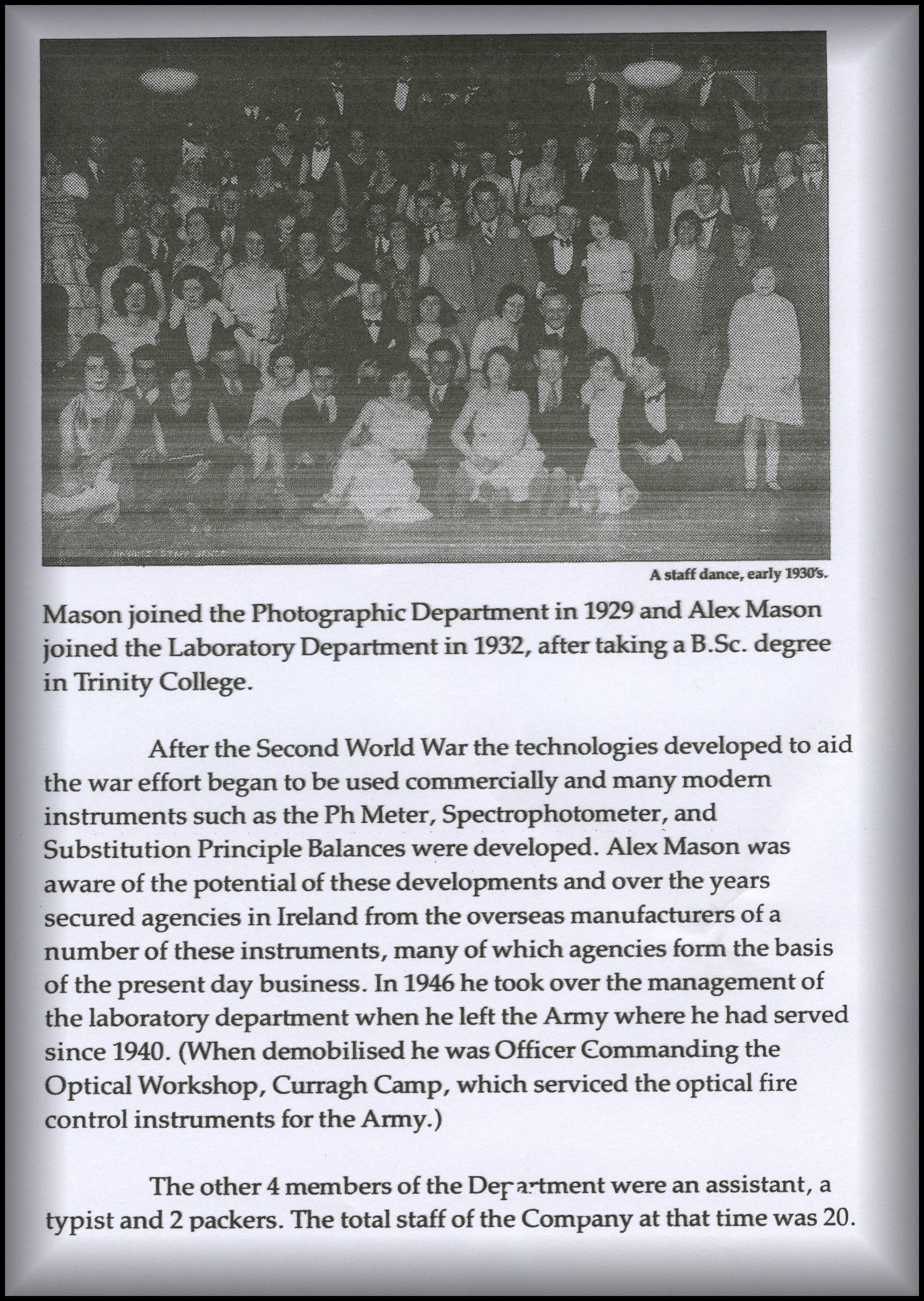
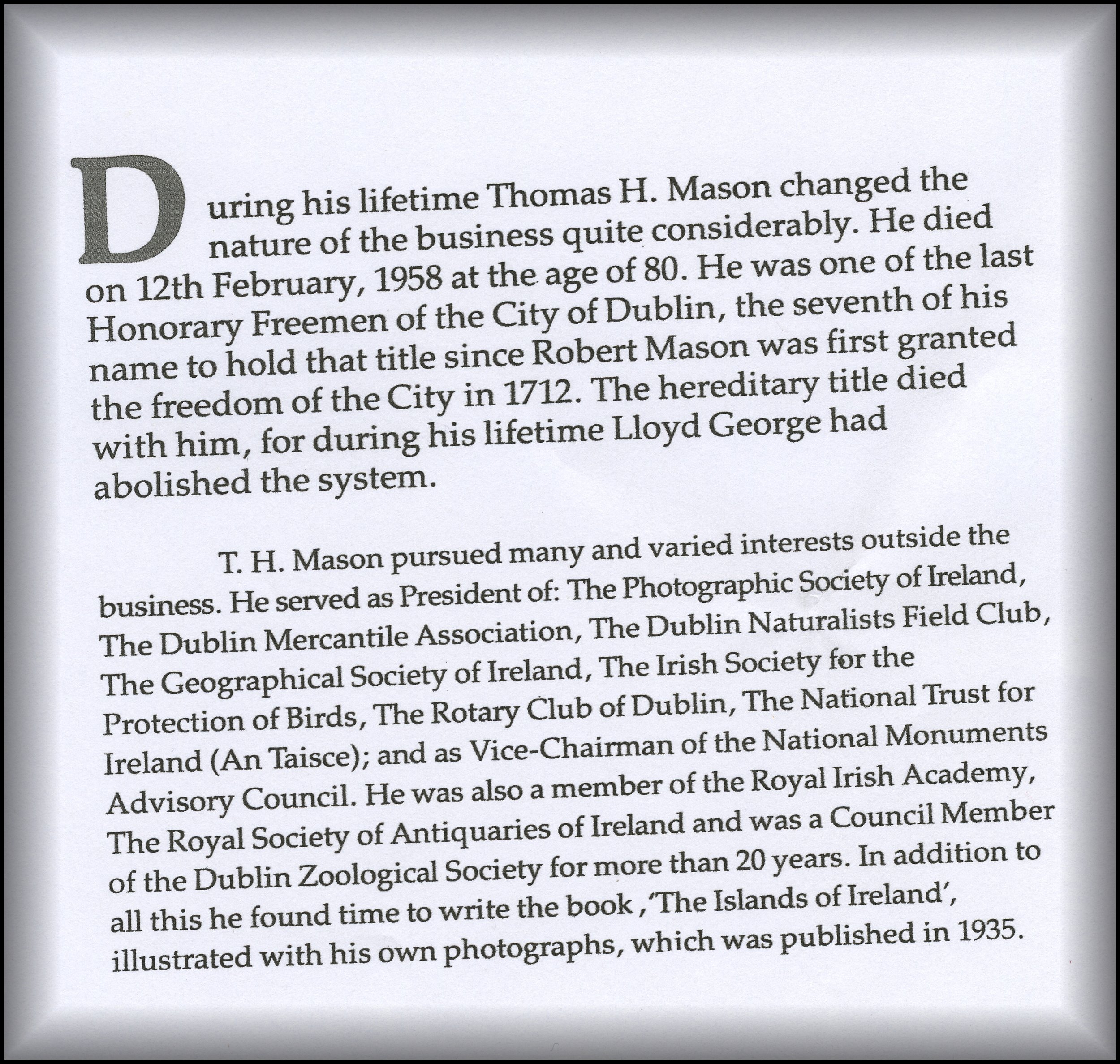
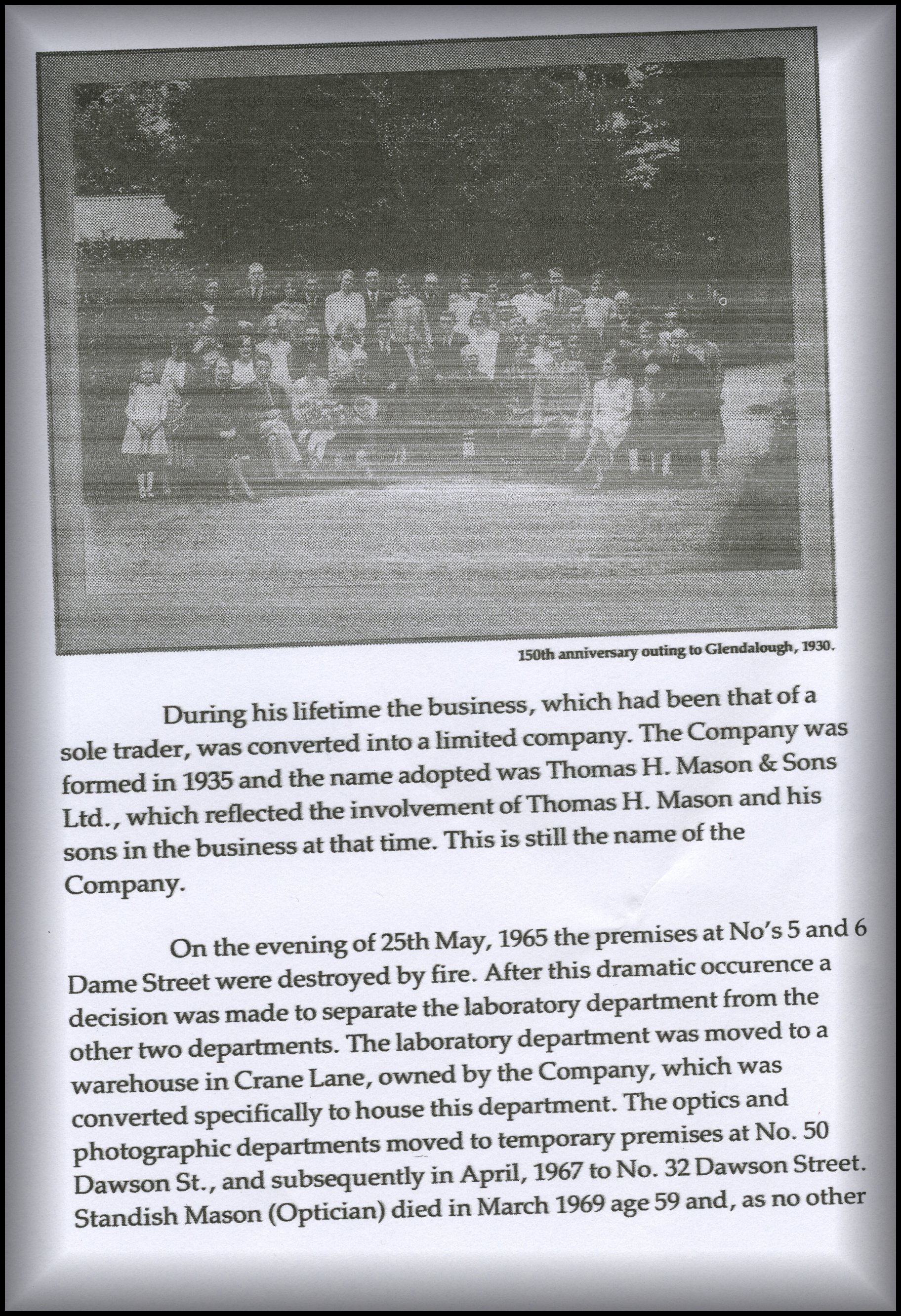
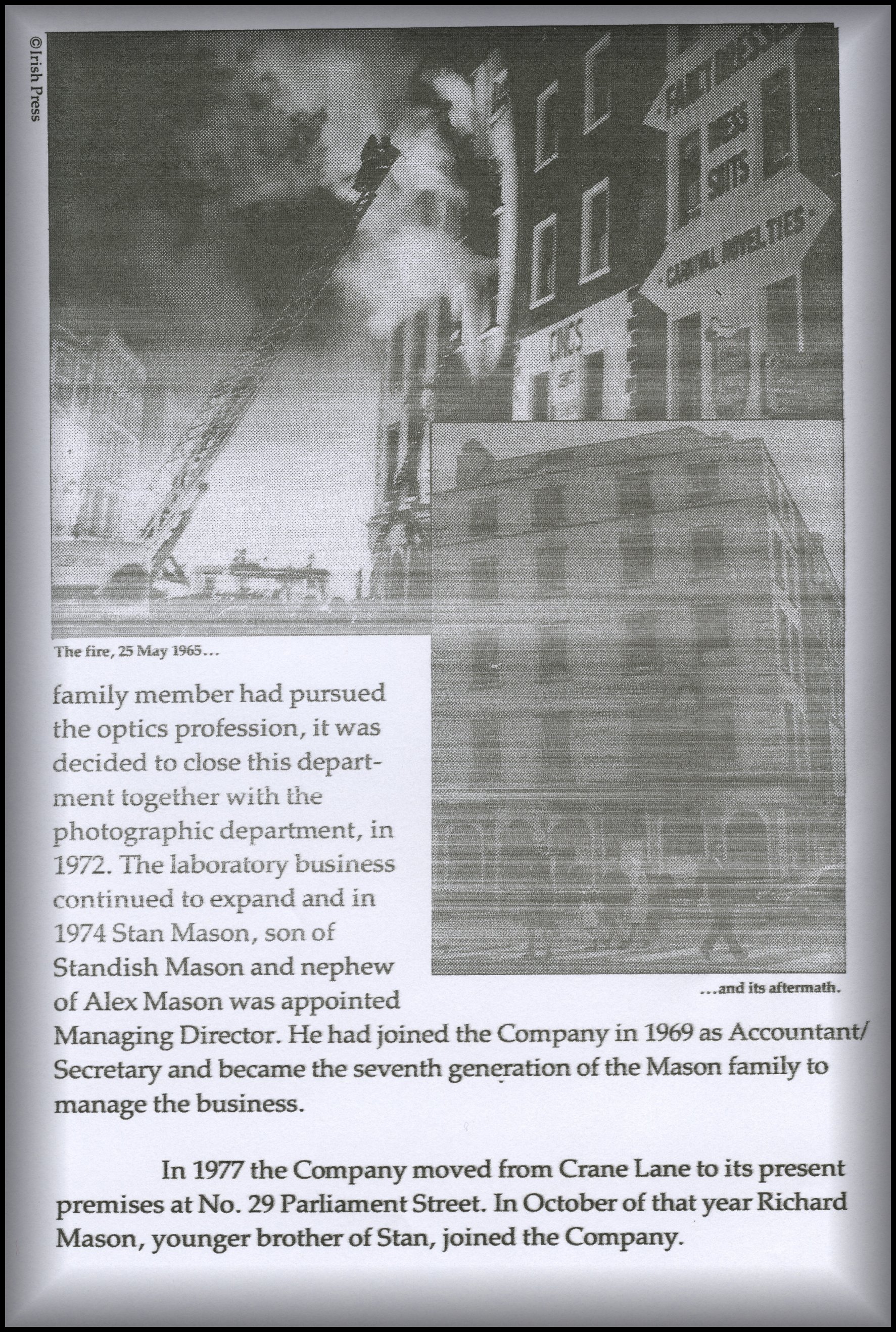
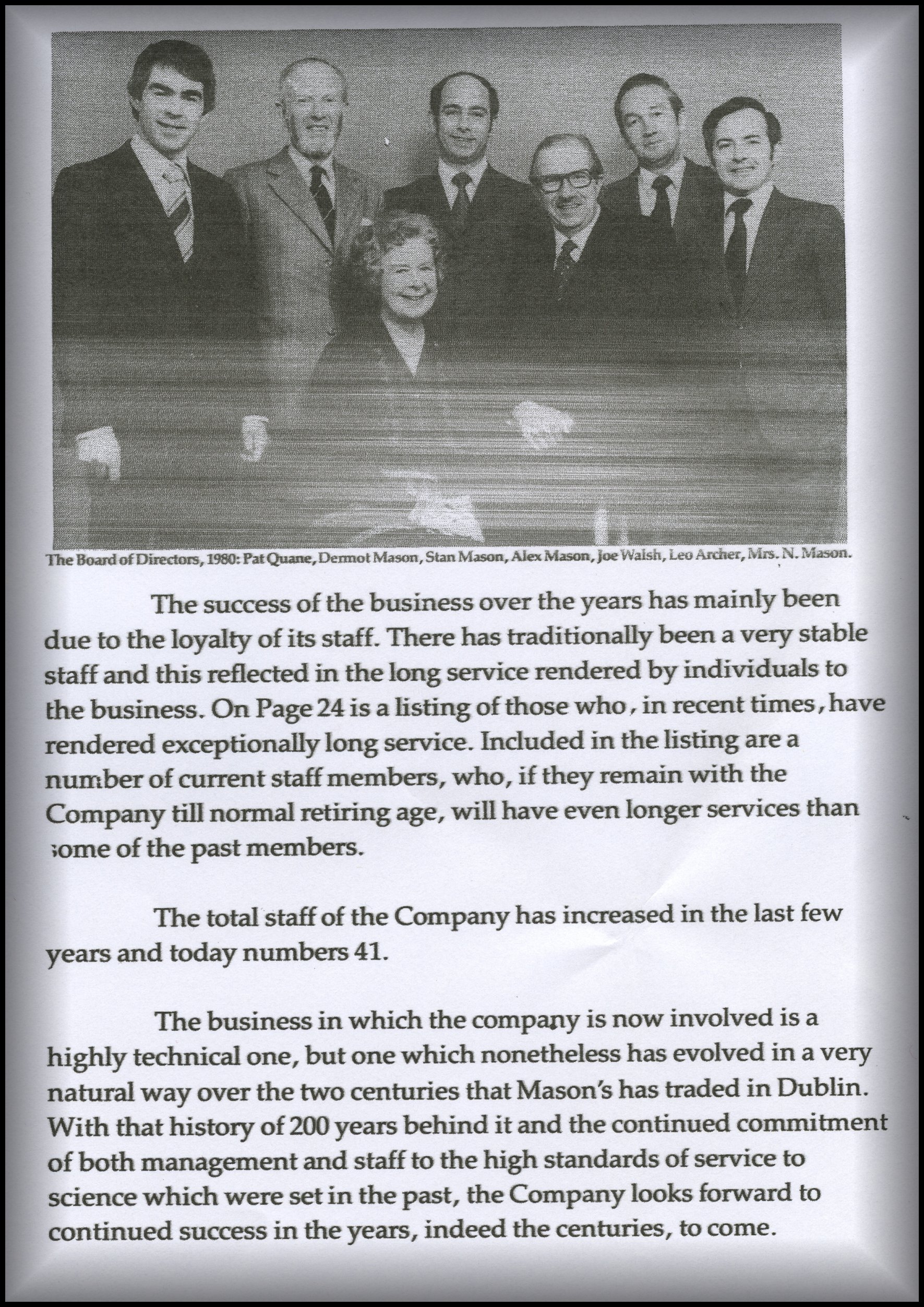

1649 The Battle of RATHMINES Dublin Ireland.


Oliver
Cromwell called it
“an astonishing mercy, so great and seasonable that we are like them that
dreamed.” He was speaking of the outcome of the Battle of Rathmines, the last
great battle fought in Dublin.
It is very
hard to believe that a battle was ever fought in Rathmines. The whole area is
so much a part of the city, with its tightly-packed terraces of Georgian and
Victorian houses, that it requires a great leap of the imagination to think of
Rathmines as a battlefield. Nowadays, it would barely serve as a suitable venue
for a decent riot.
The
landscape of the area was quite different in the summer of 1649. In those days,
the city of Dublin extended no further south than St Stephen’s Green. Weston St
John Joyce, in his book “The Neighbourhood of Dublin”, captured it well.
Rathmines was far out in the country, laid out in fields, pastures and tillage
lands, with perhaps occasional patches covered by furze or bracken. He
concluded that there wasn’t even a village there at the time and we may suppose
the district between Ratnmines Castle and the city to have been interspersed
with cottages and farmhouses adjoining the two highways now known as the
Rathmines and Ranelagh roads. Communication between the main thoroughfares was probably
by means of rough lanes and tracks across the fields, used principally by
farmers and others residing in the district.
Rathmines
Castle was one of four small forts in the vicinity. It stood just to the north of what is now Palmerston Park, near
the corner of Upper Rathmines Road, The other “castles” were at nearby Rathgar,
at the corner of Highfield Road and Orwell Road, where there is a branch office
of the Irish Permanent Building Society; at Rathfarnham, still there to this
day, and Baggotrath, on Upper Baggot Street, where Searson’s public house now
stands.
The Battle
of Rathmines, though fought on Irish soil, was basically a cynicial engagement between the opposing
forces of the English Civil War, the
Royalists and the Parliamentarians. Dublin was held by Parliamentary garrison, under the command of a colonel with the rather
common name of Michael Jones. The city had
been ceded to them two years earlier by the Marquis of Ormond, Viceroy
of Ireland, on the basis that English rebels were preferable to Irish ones.
..
